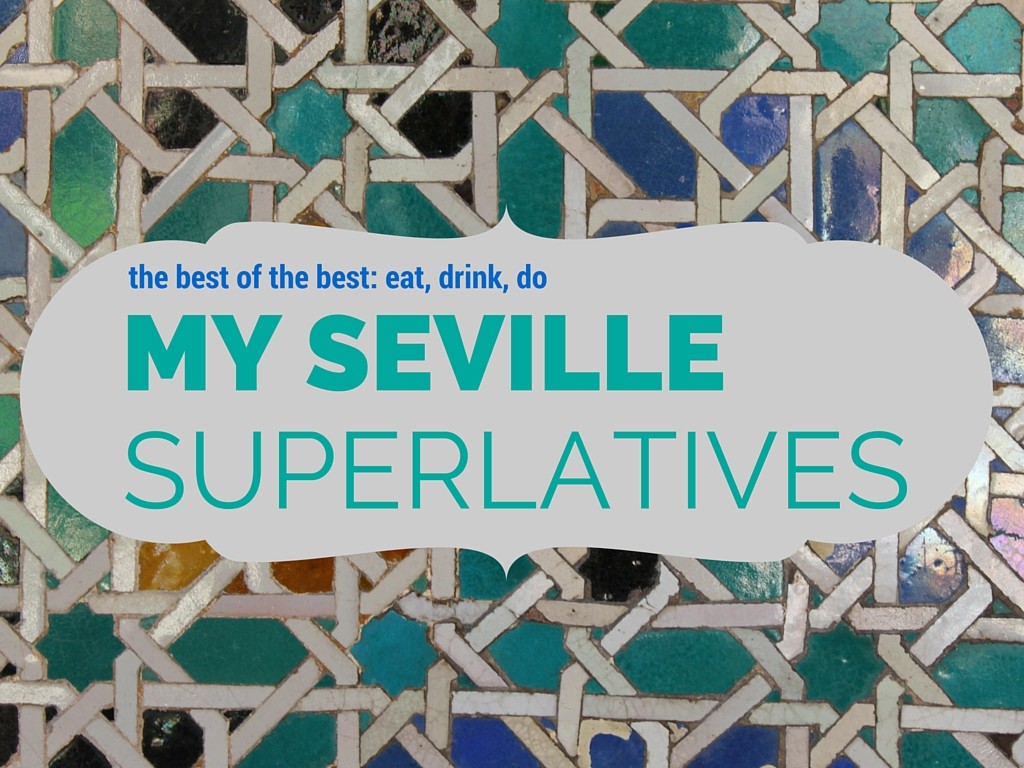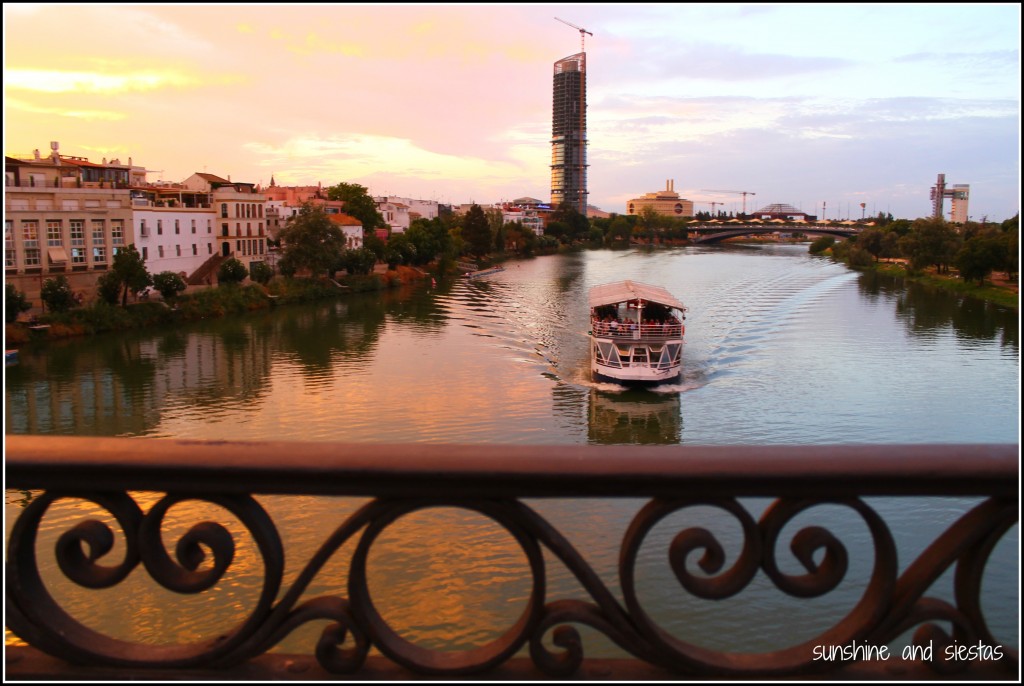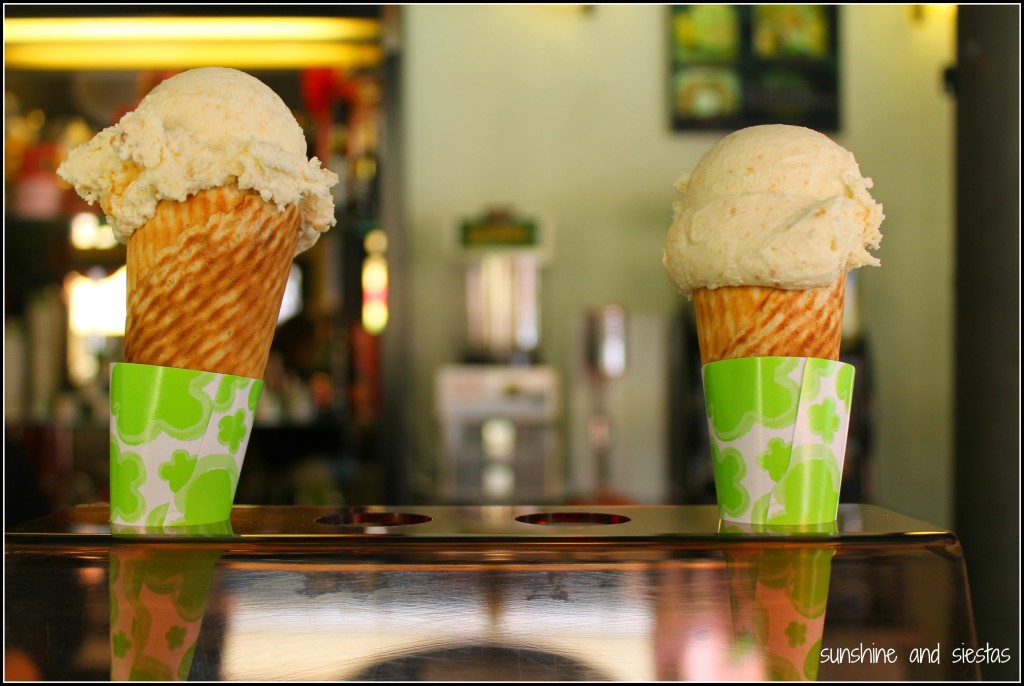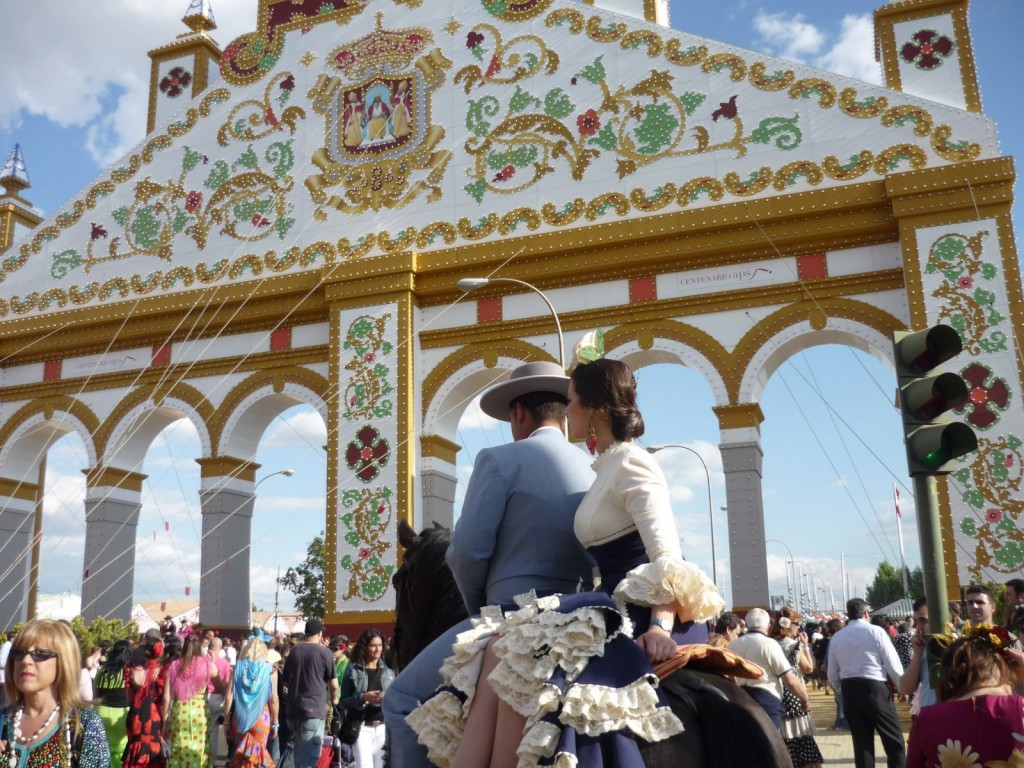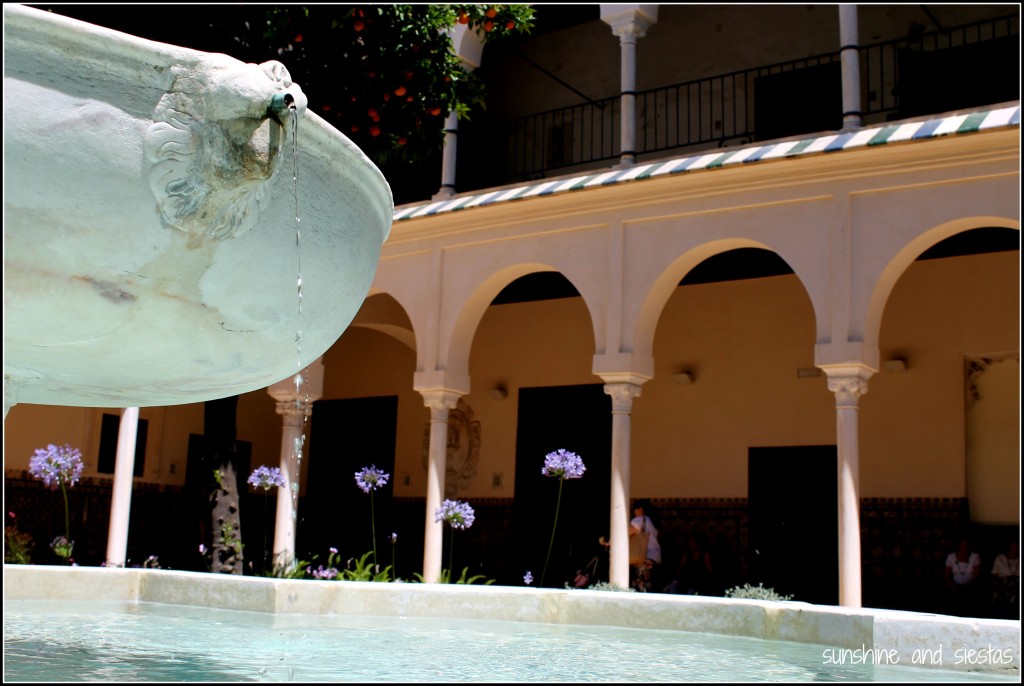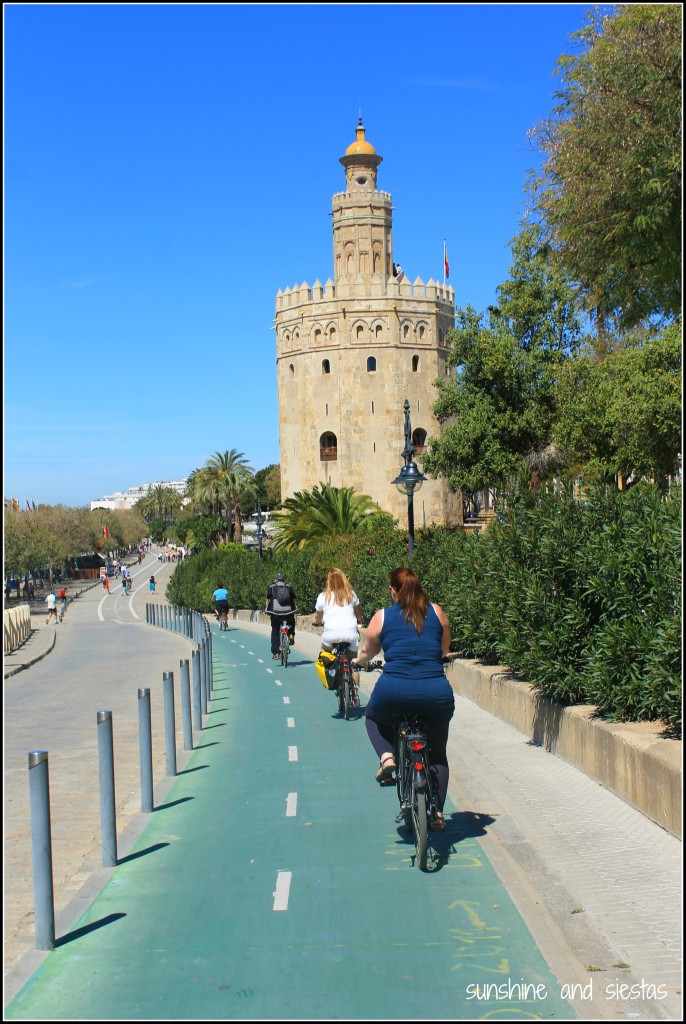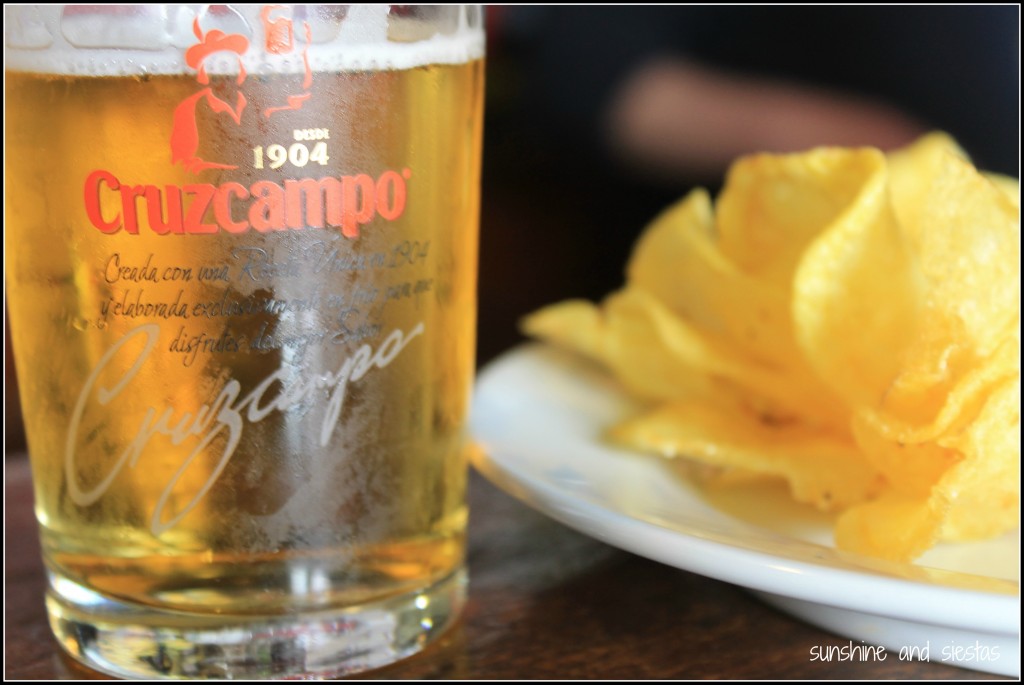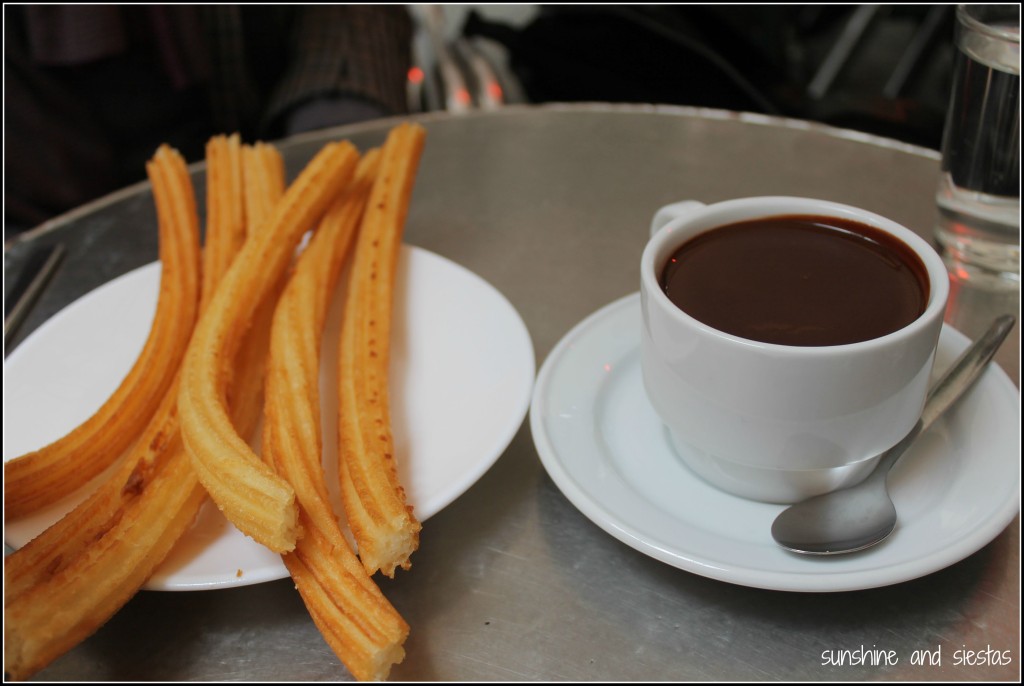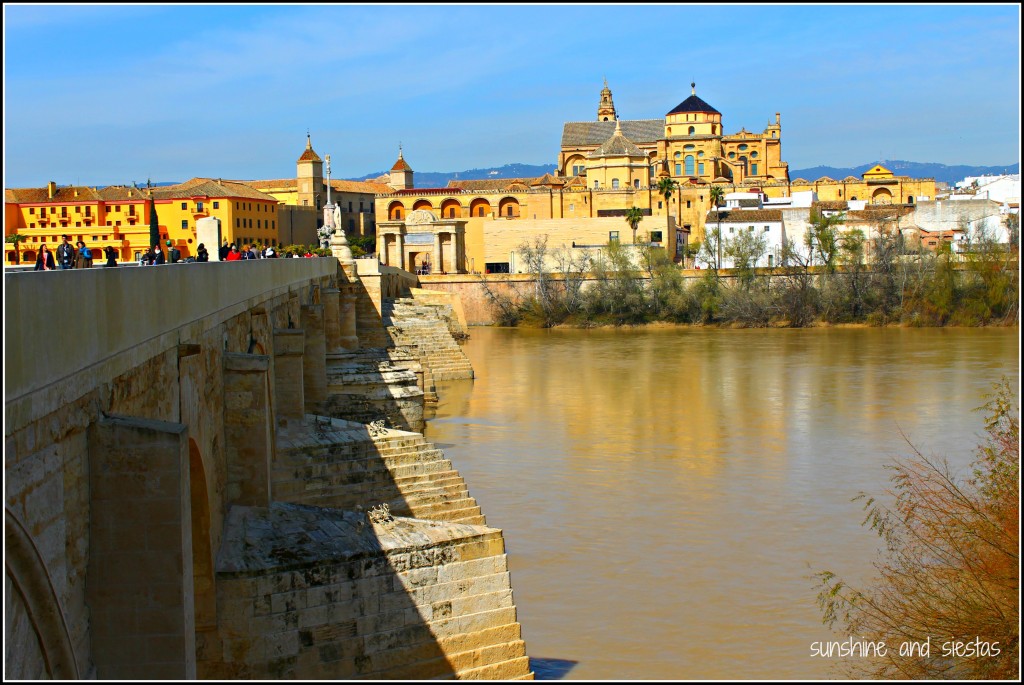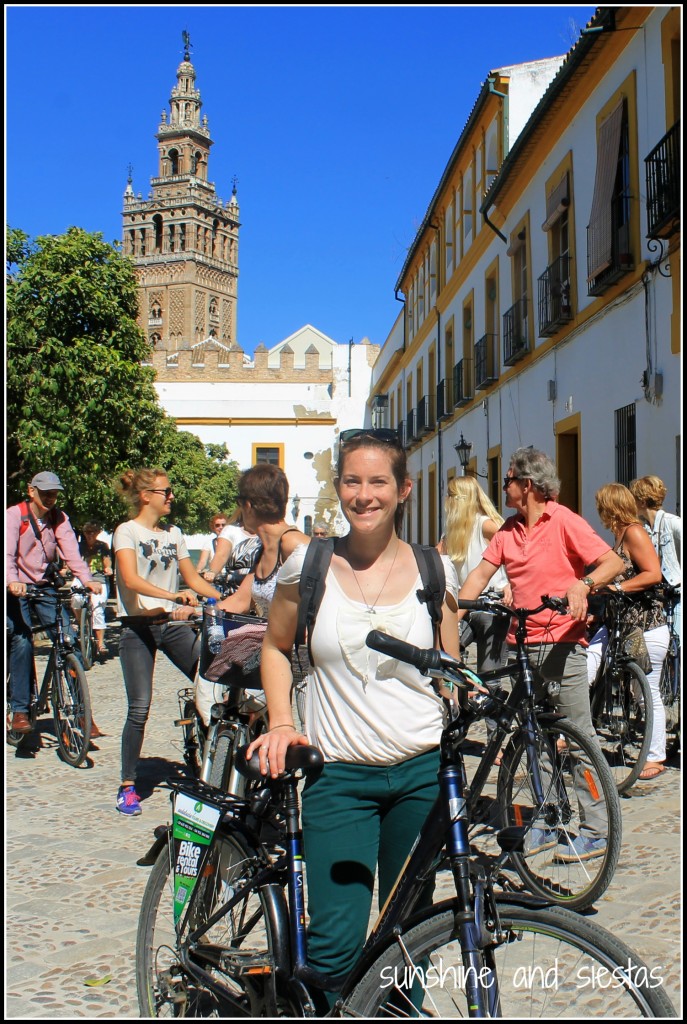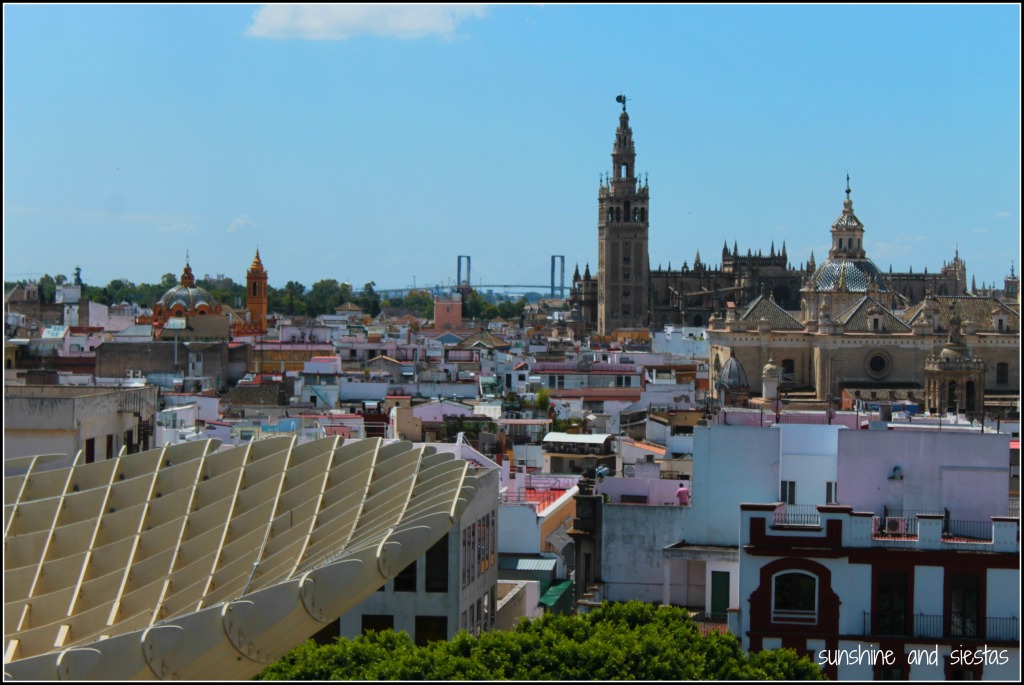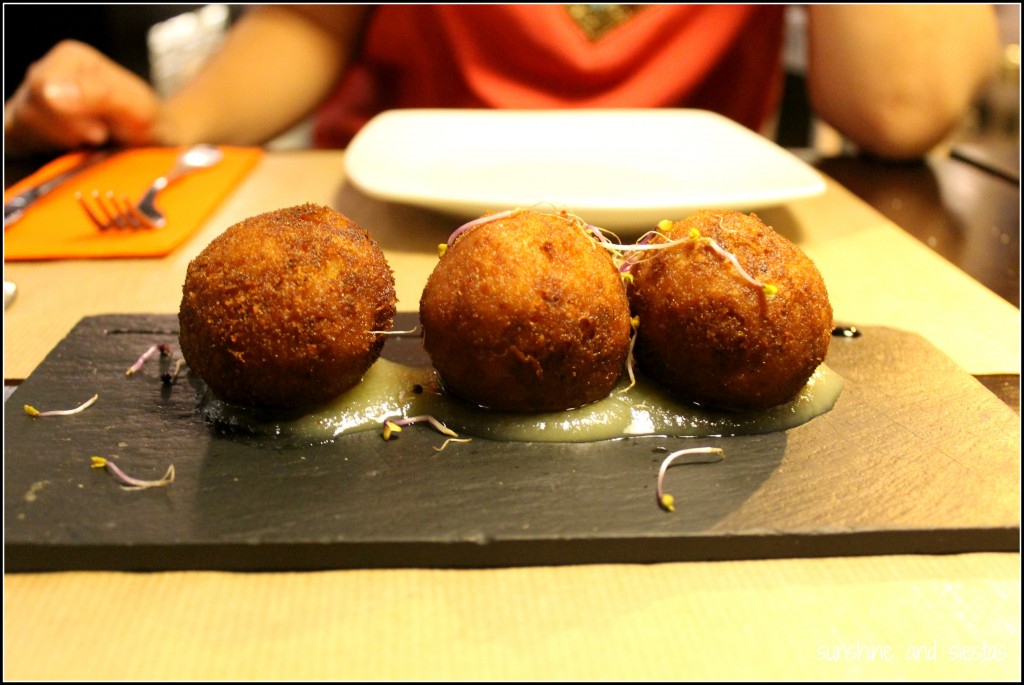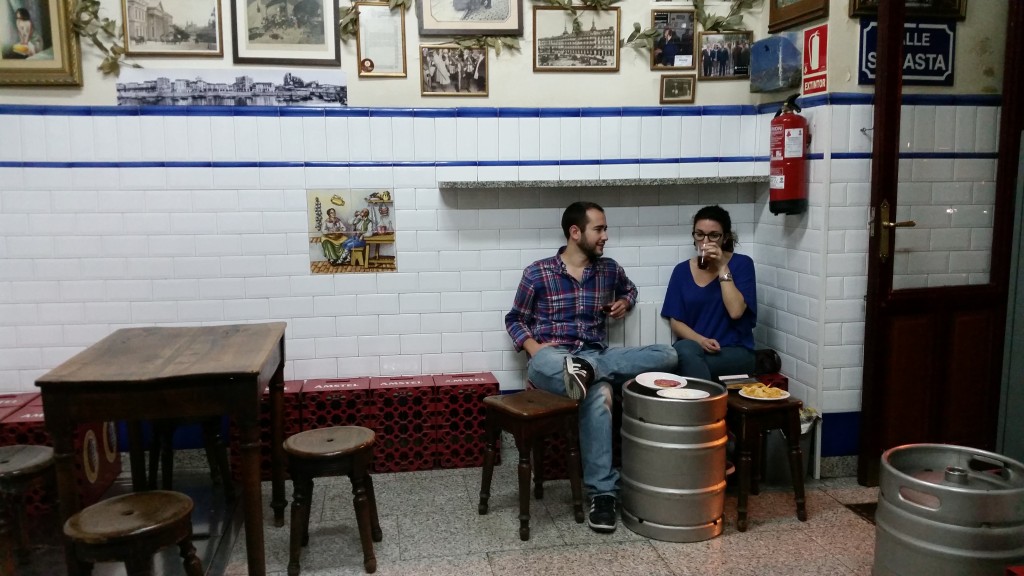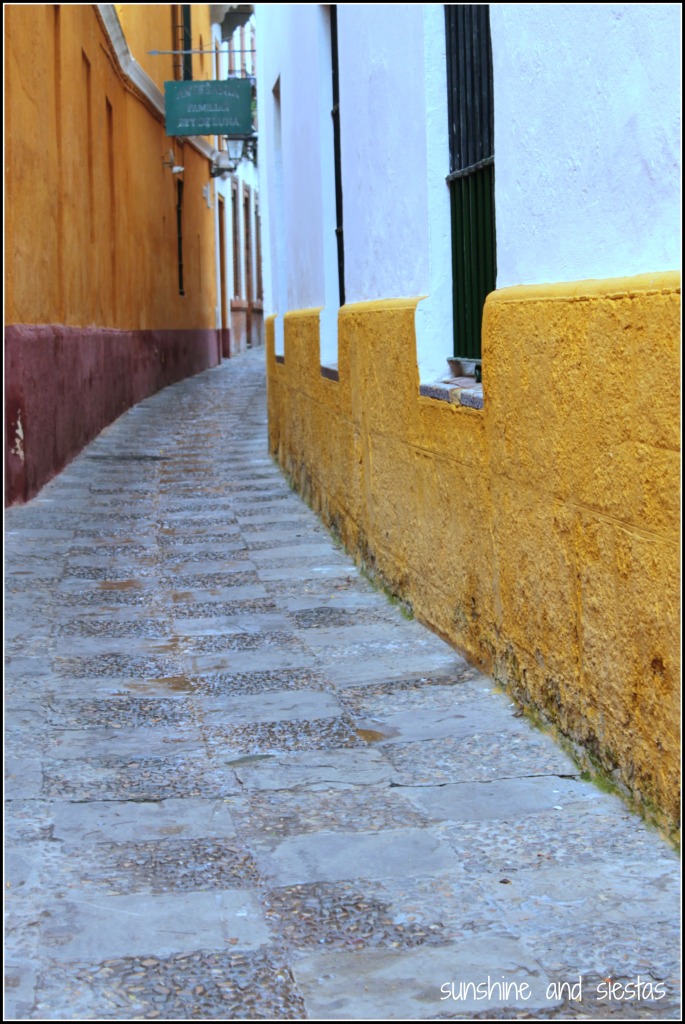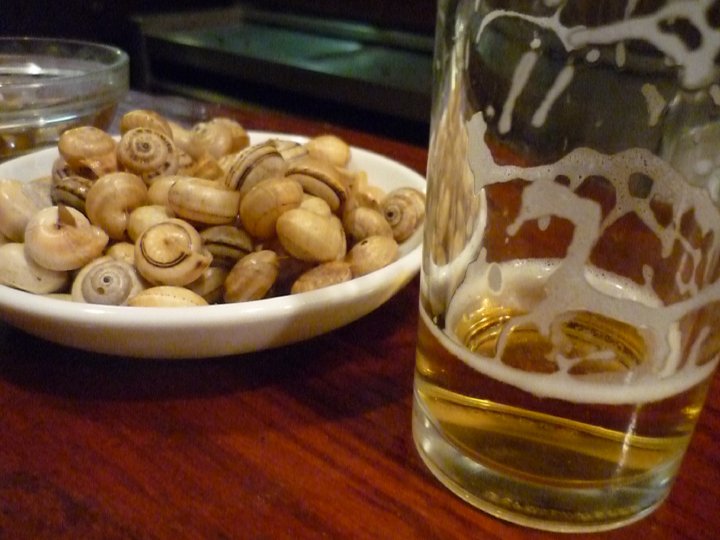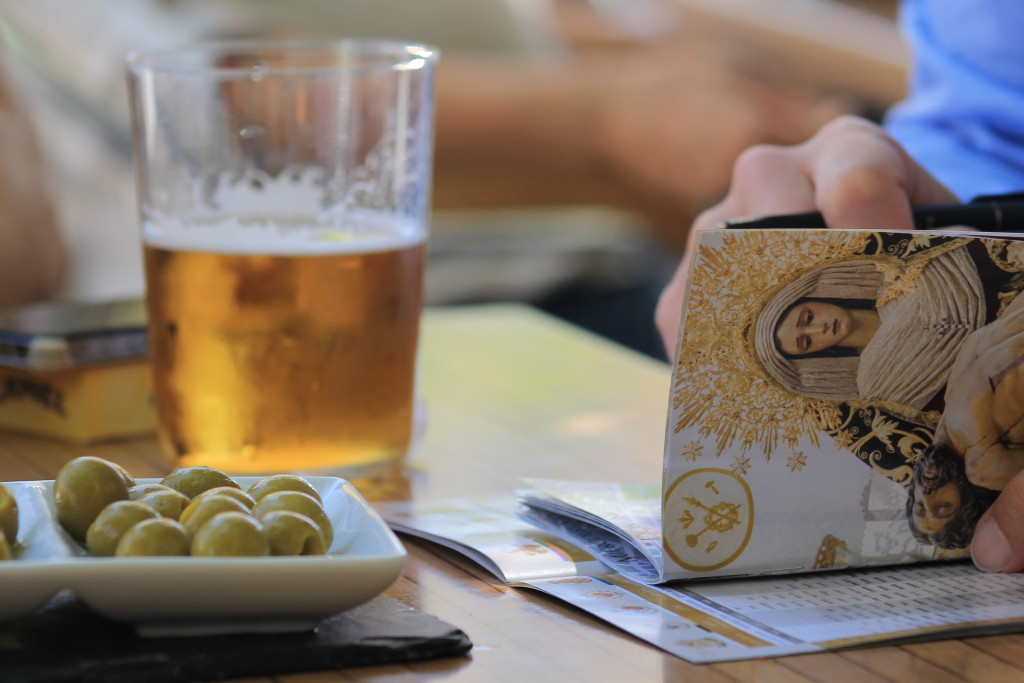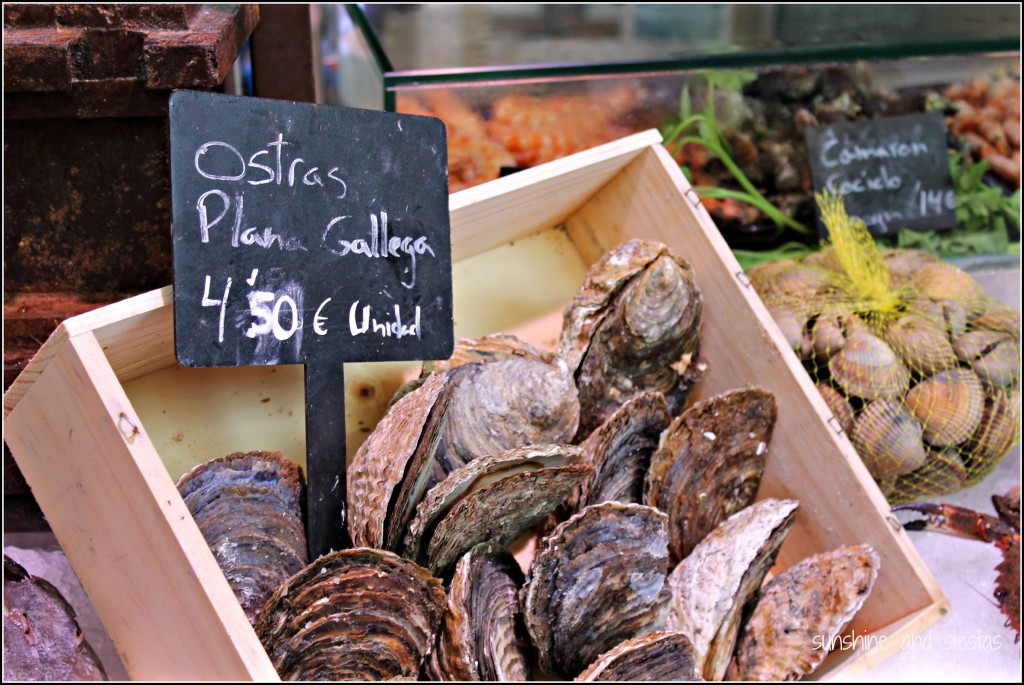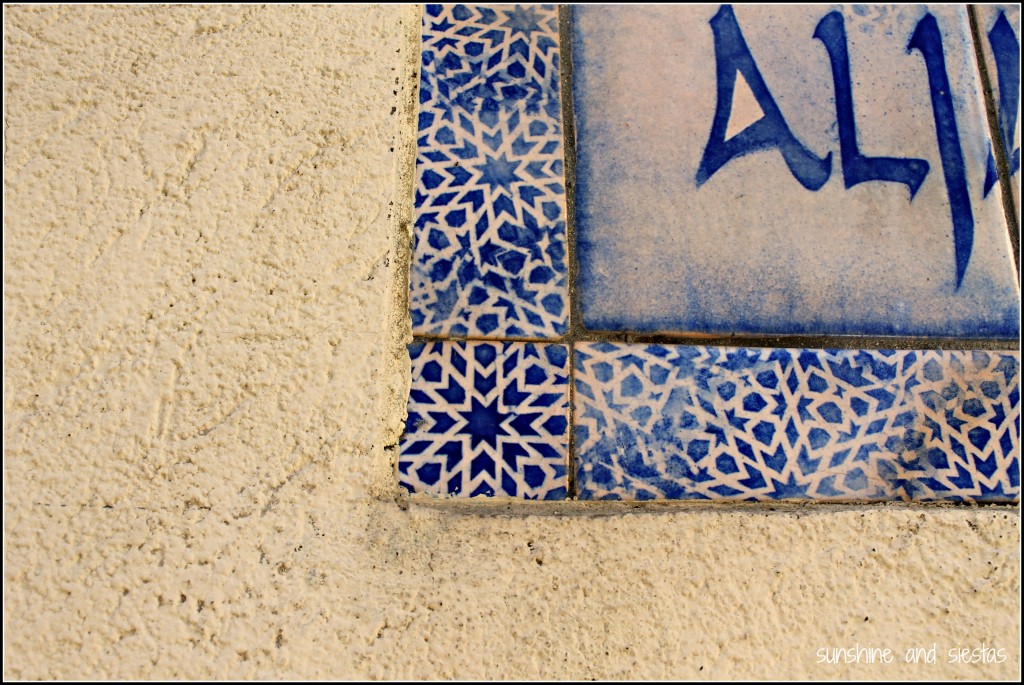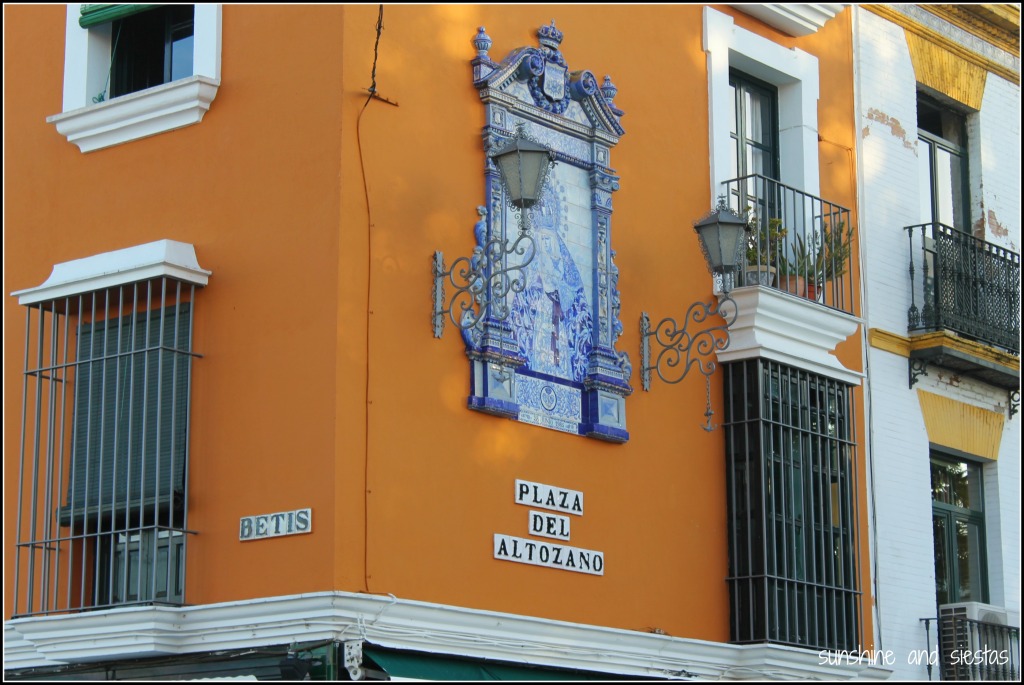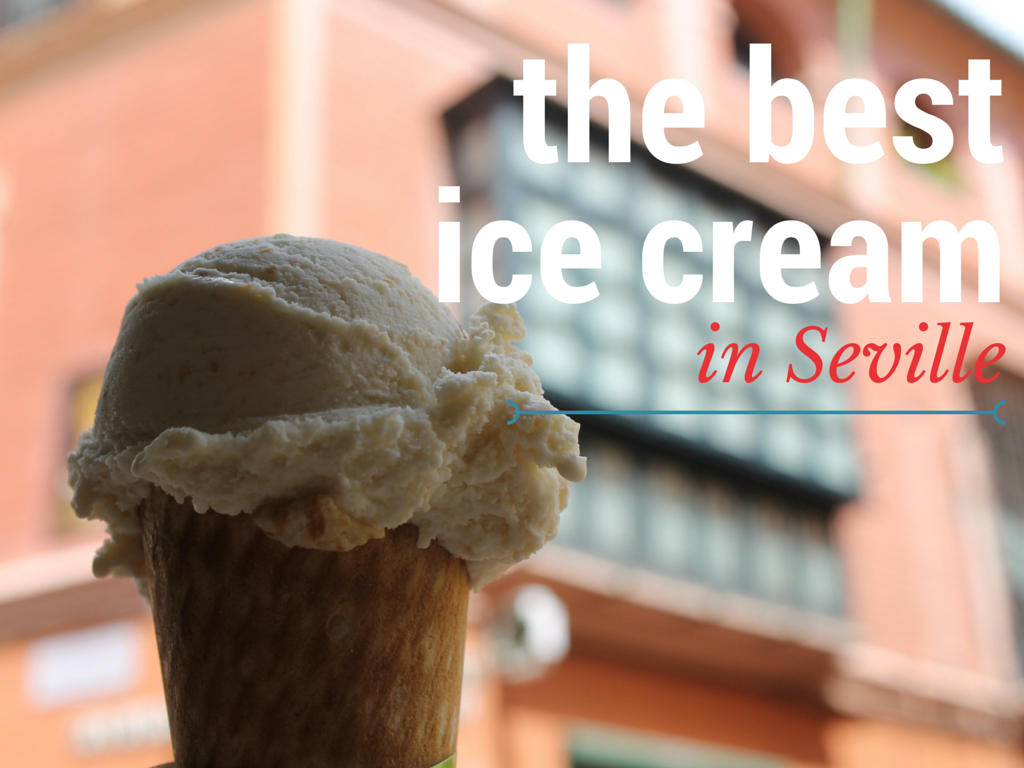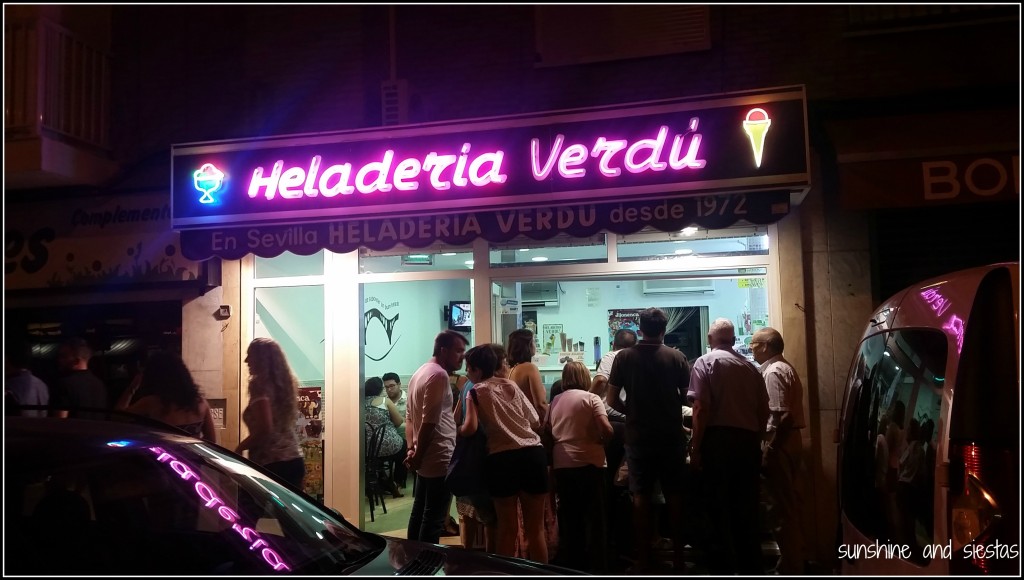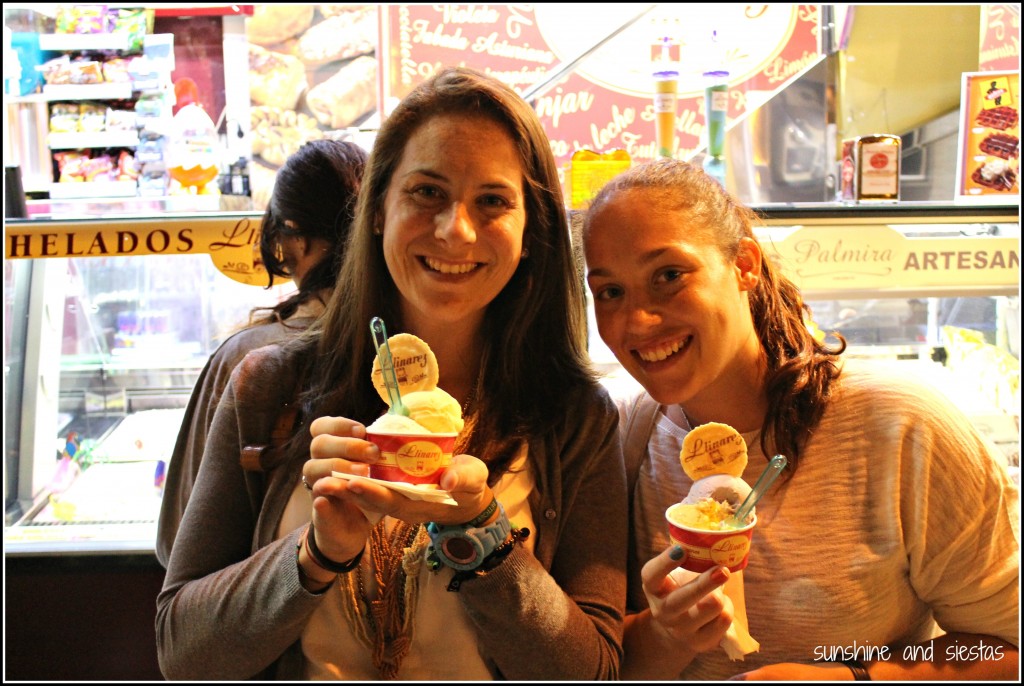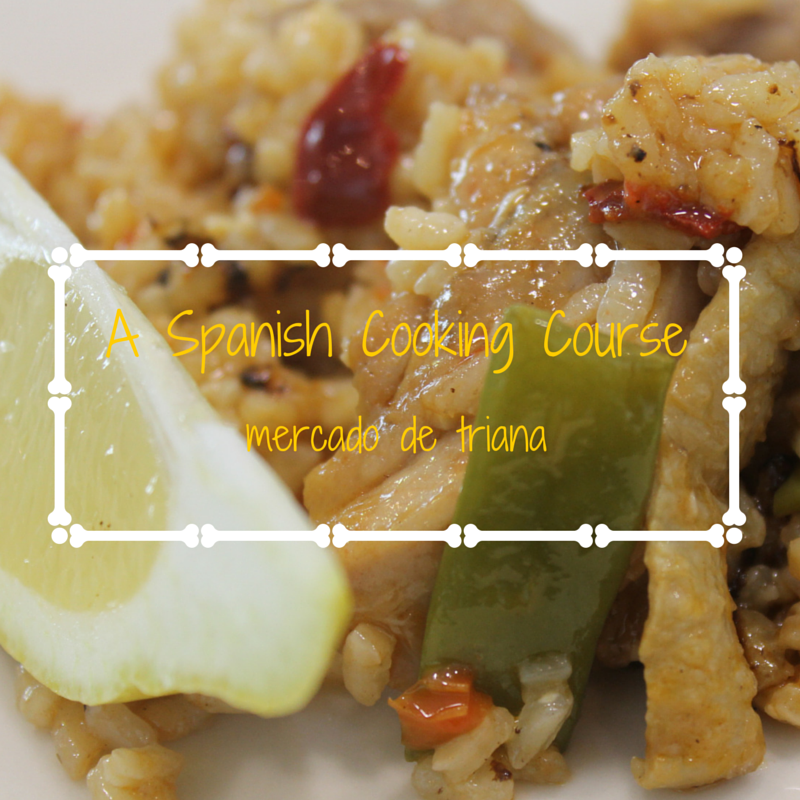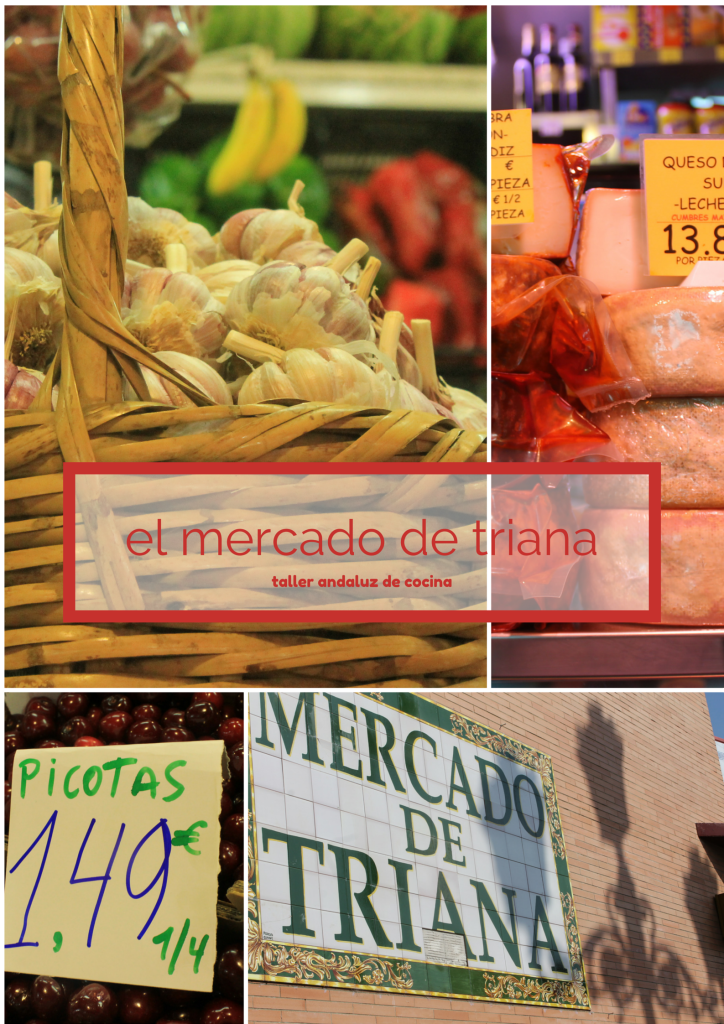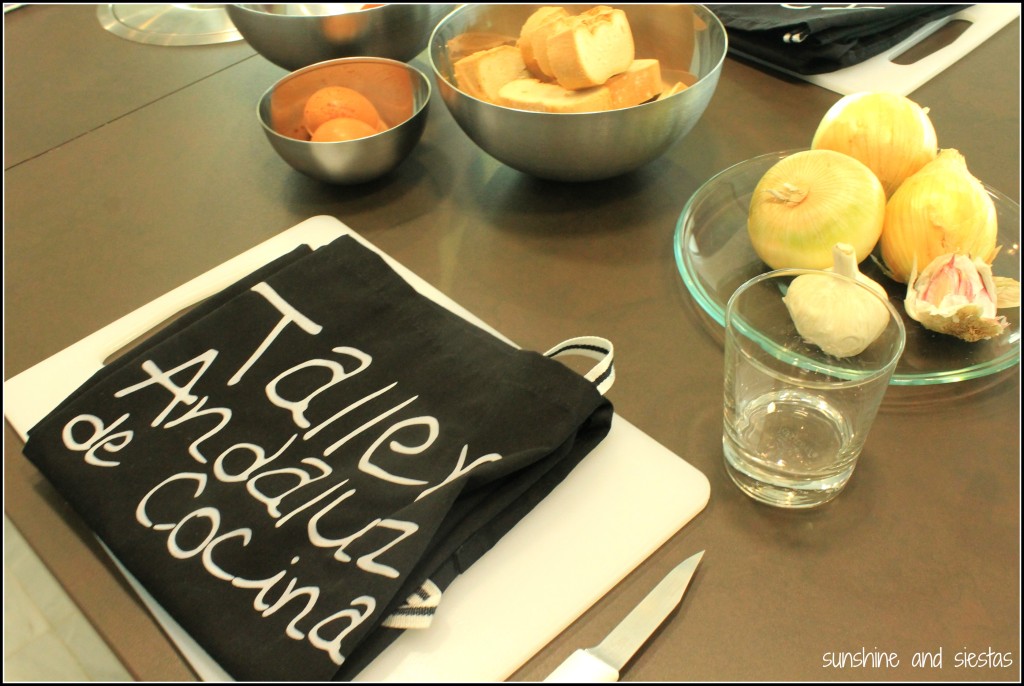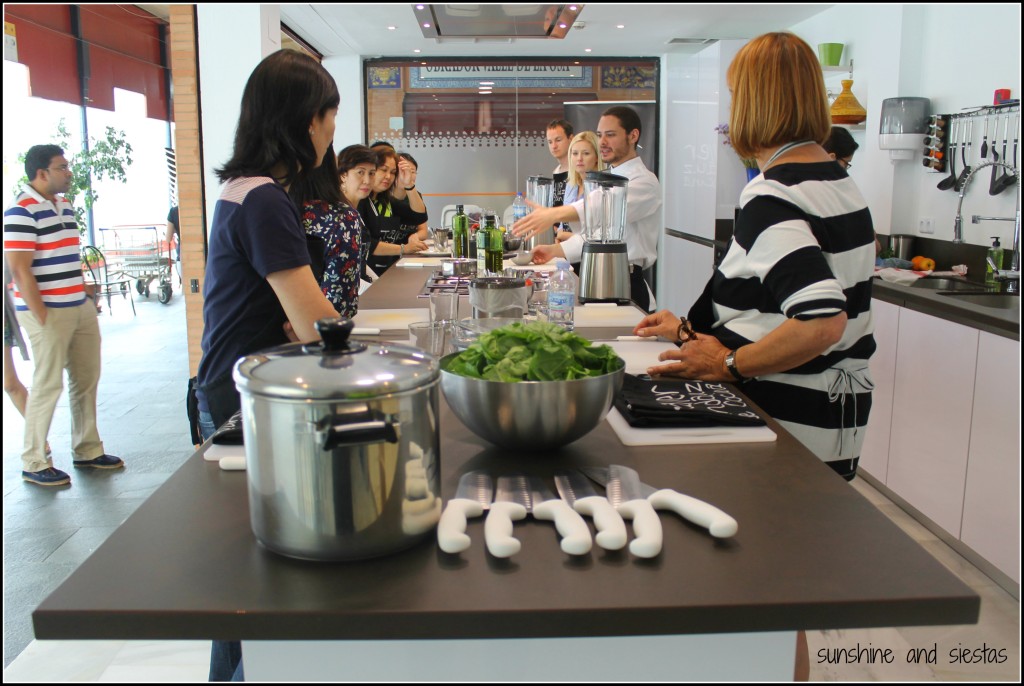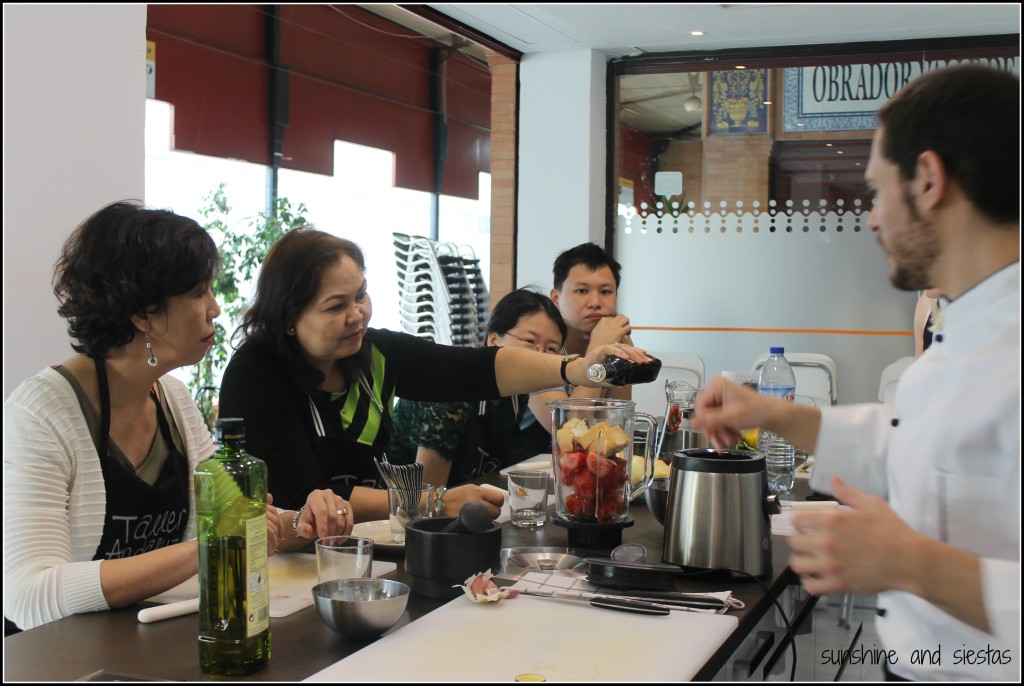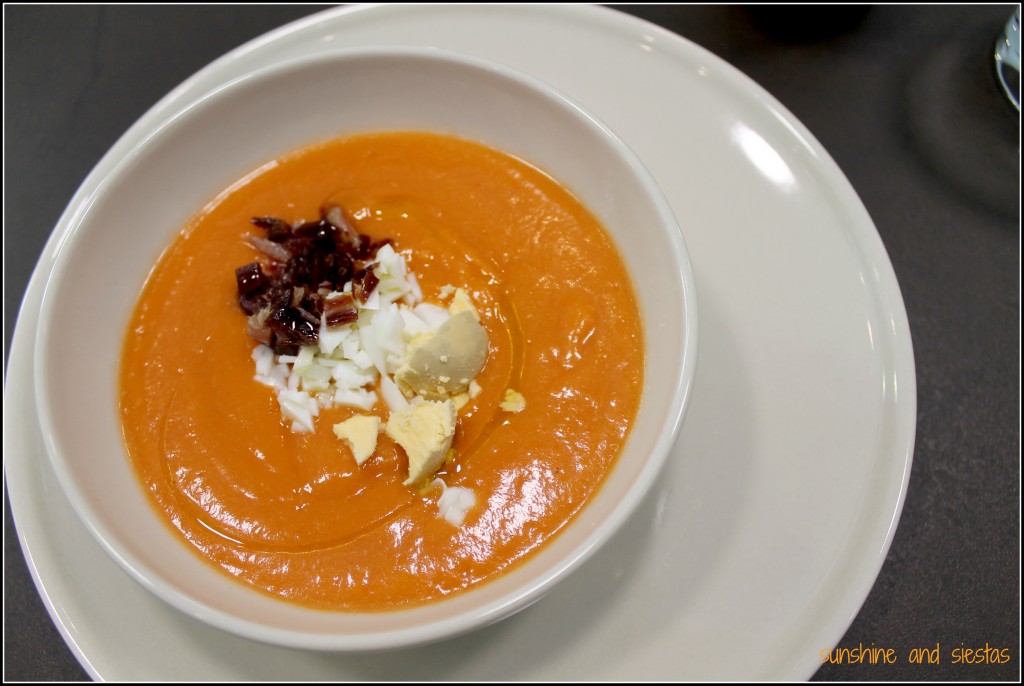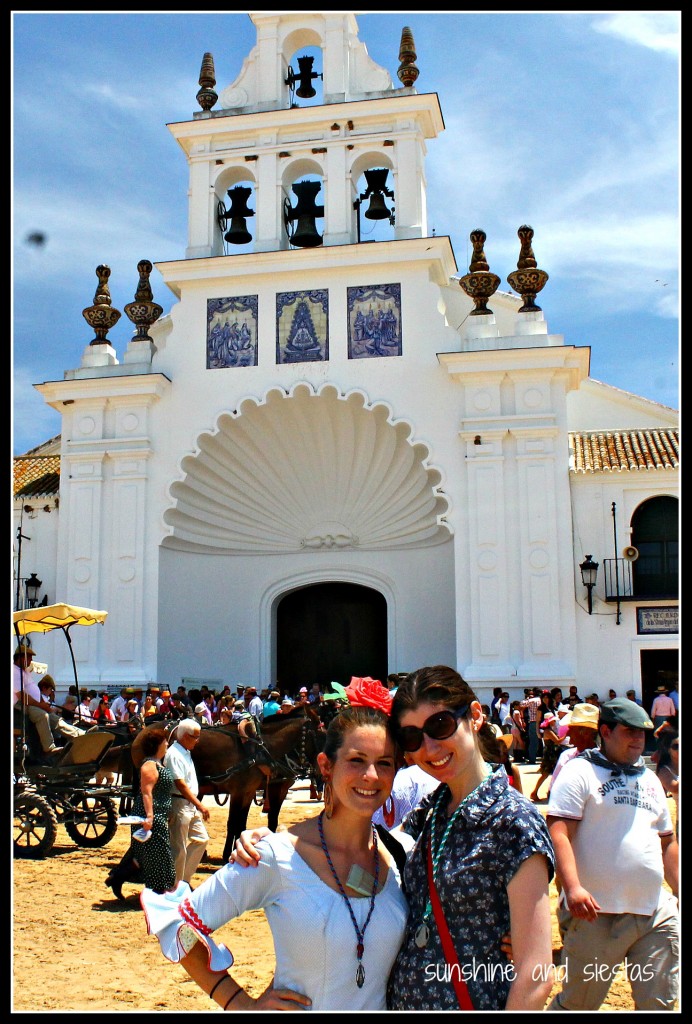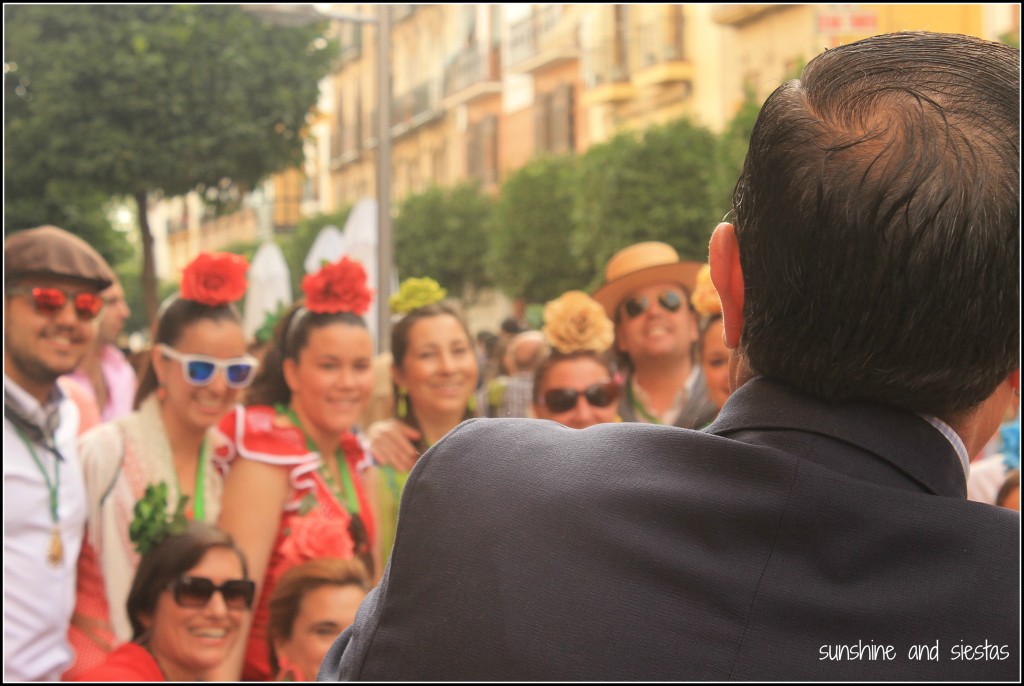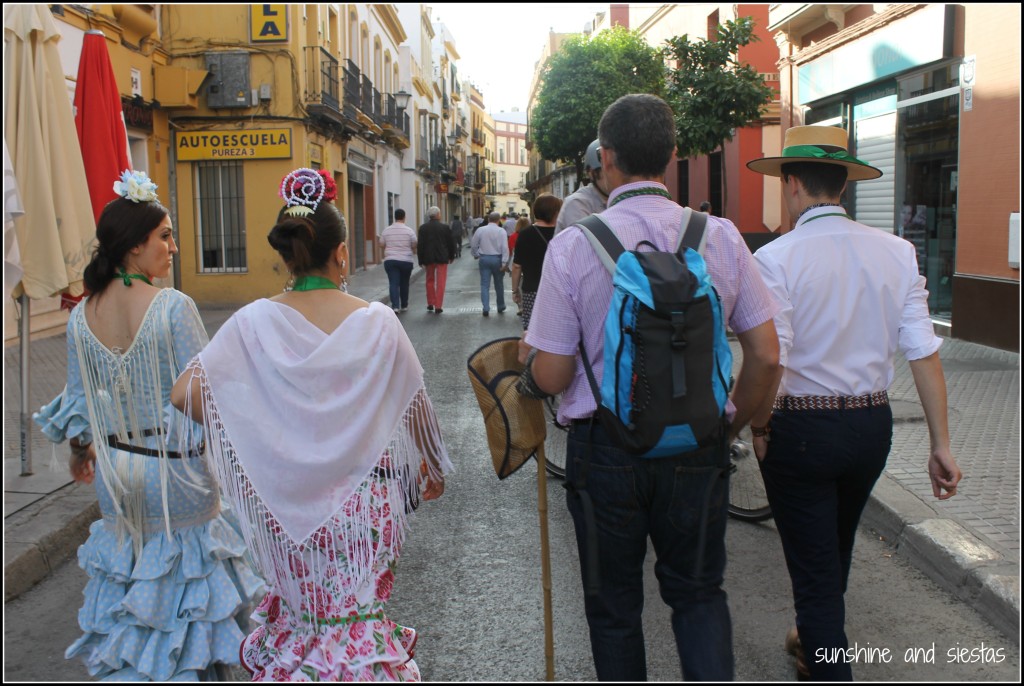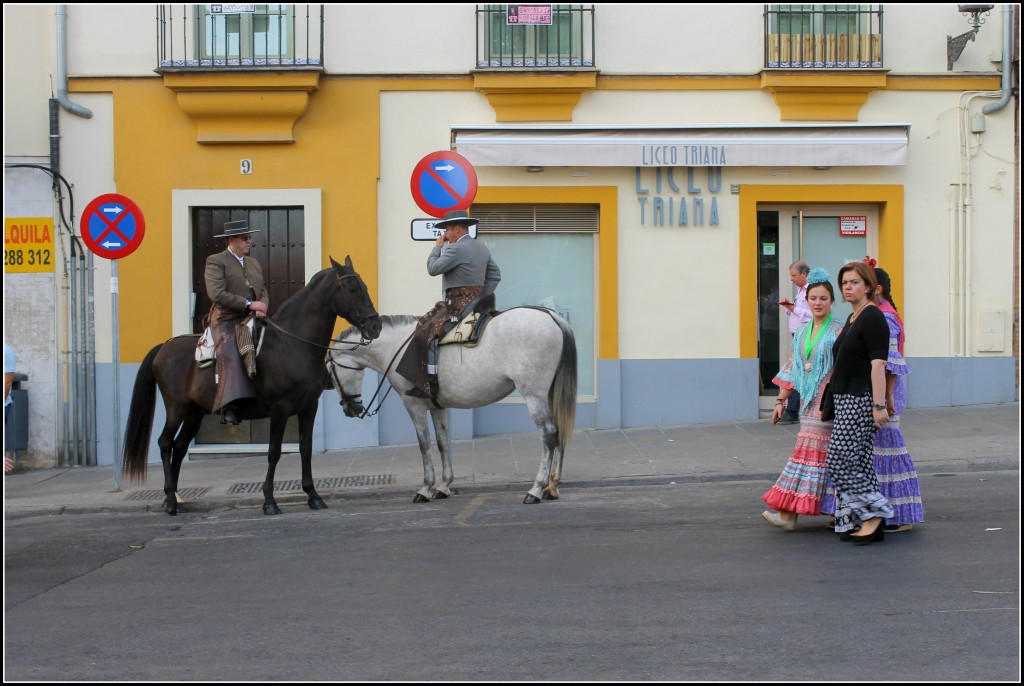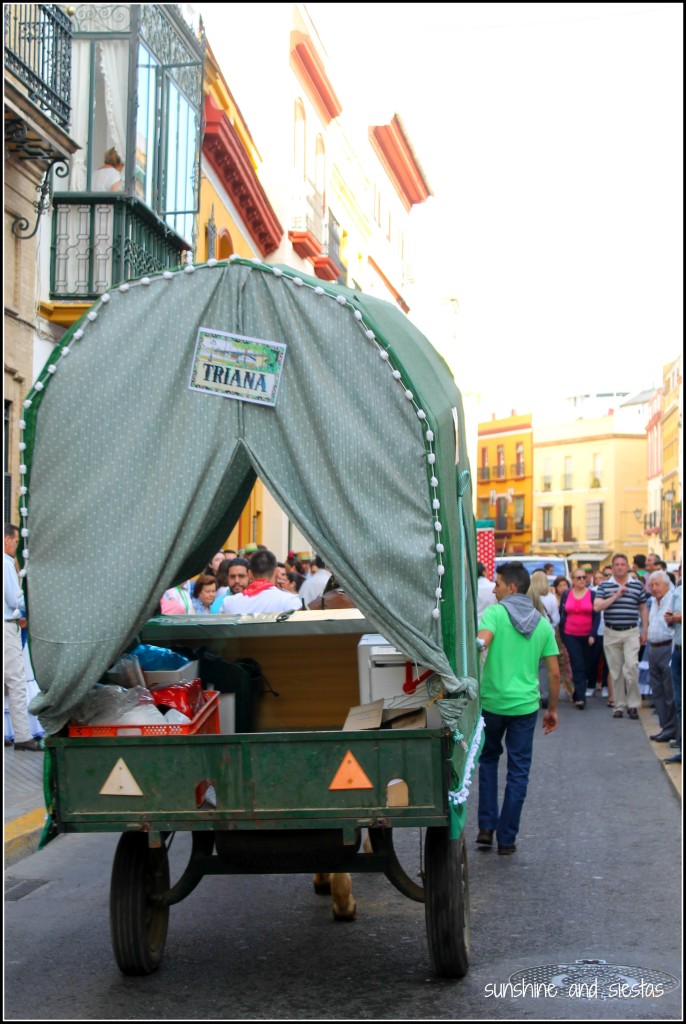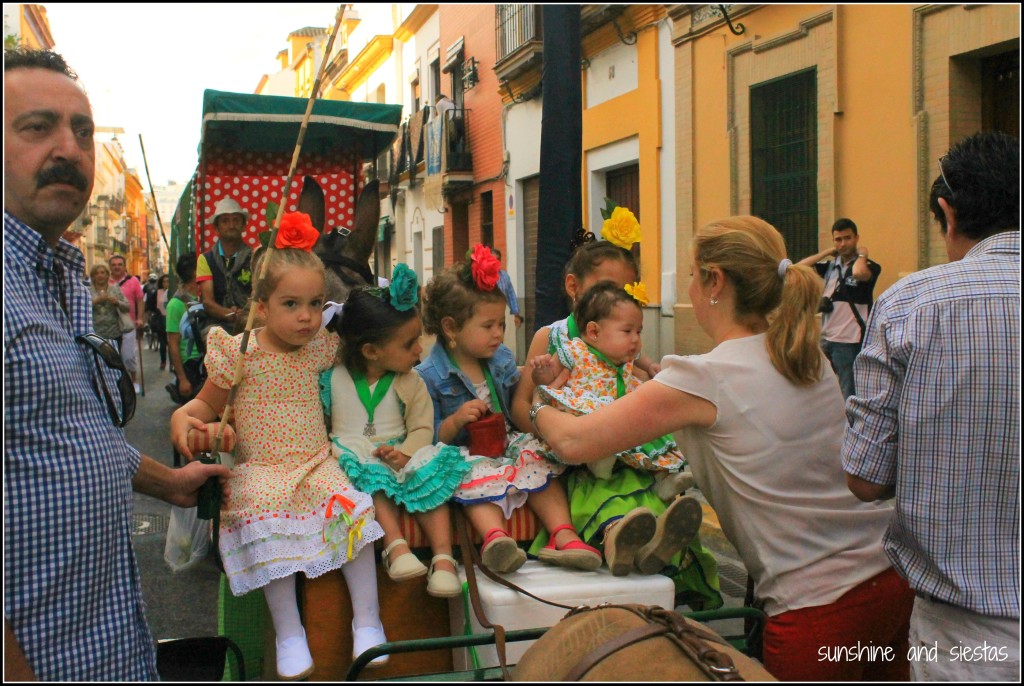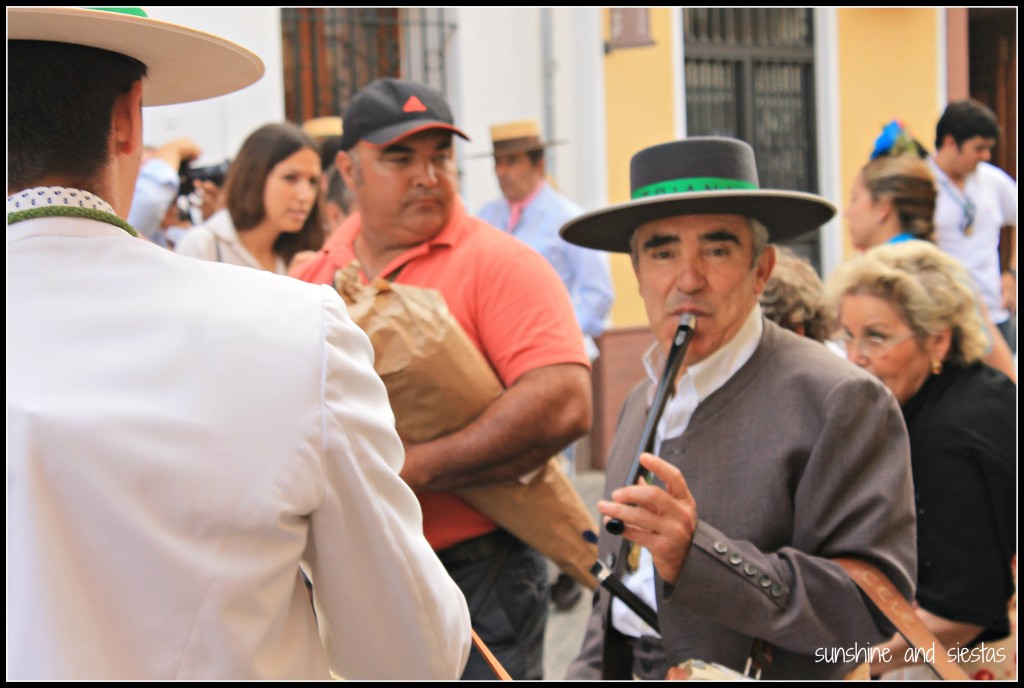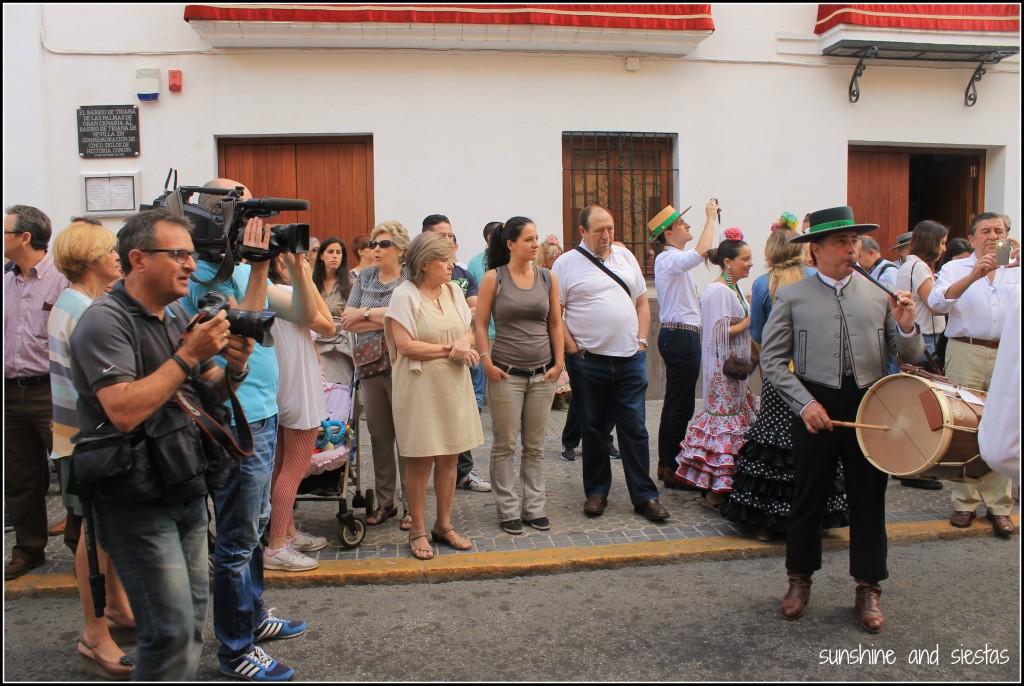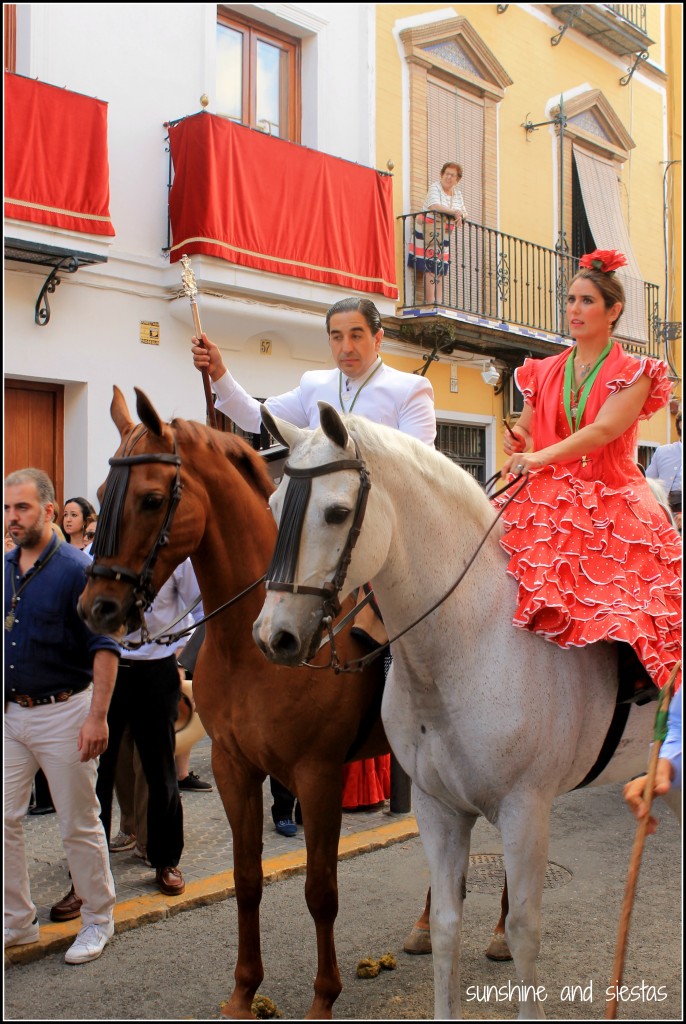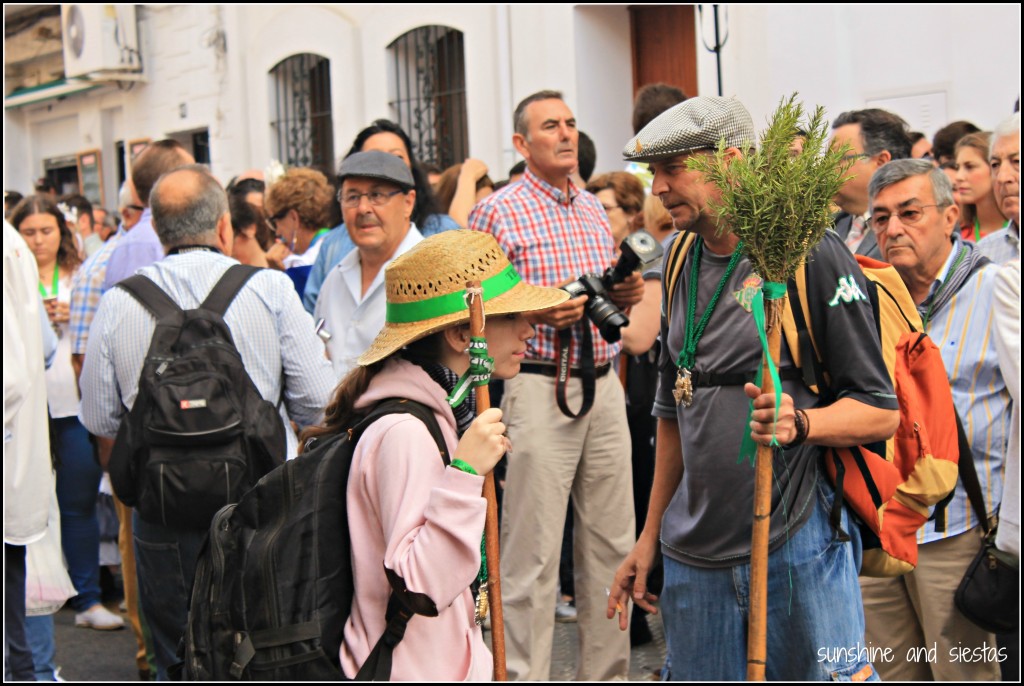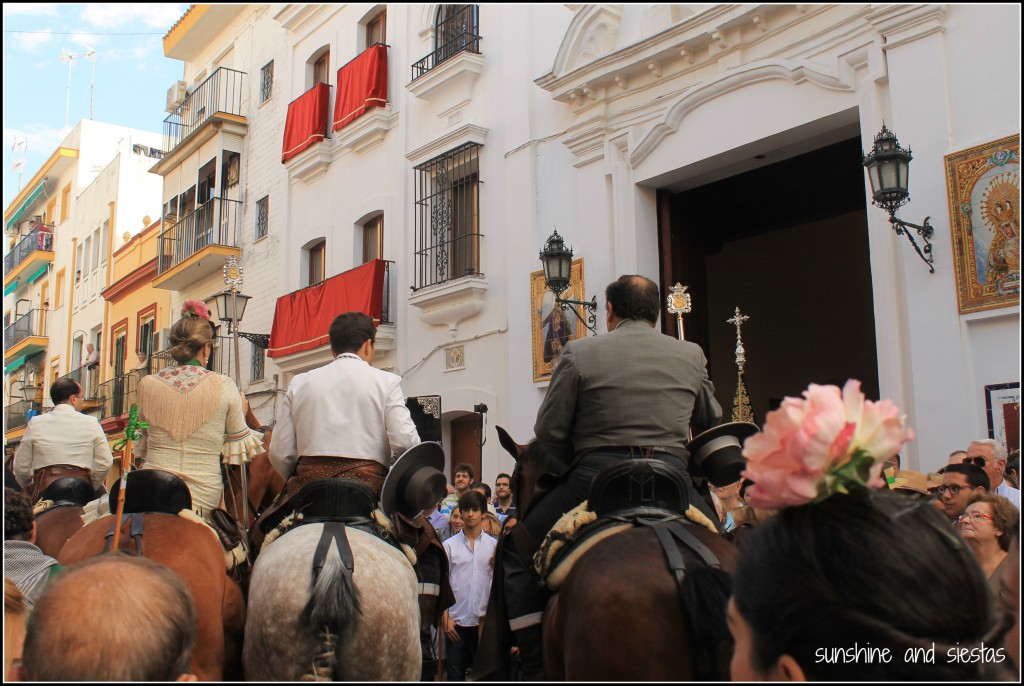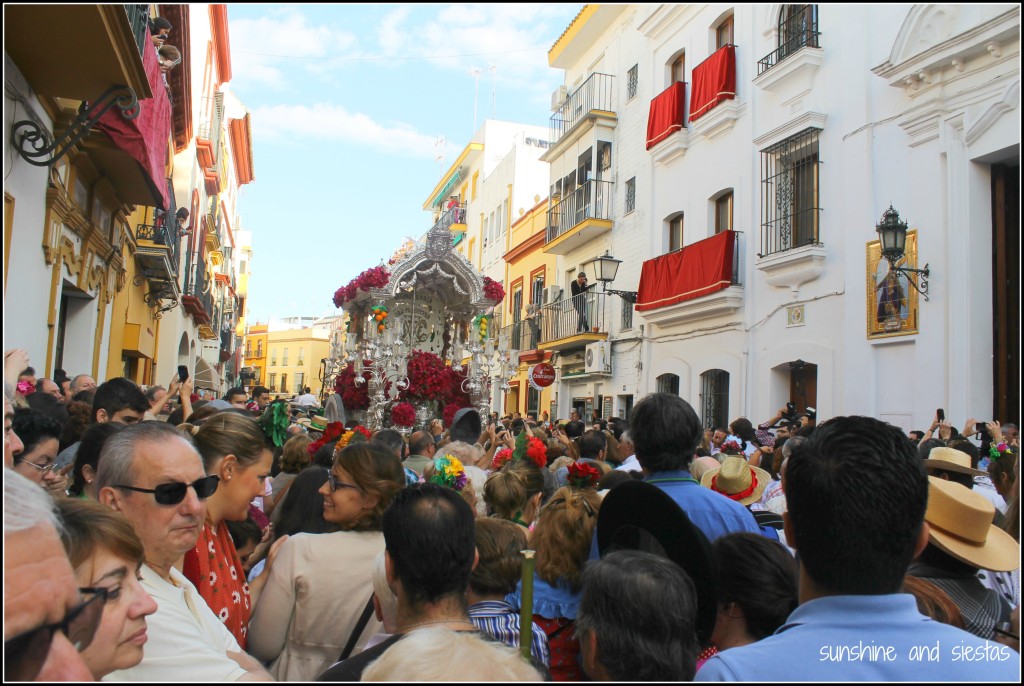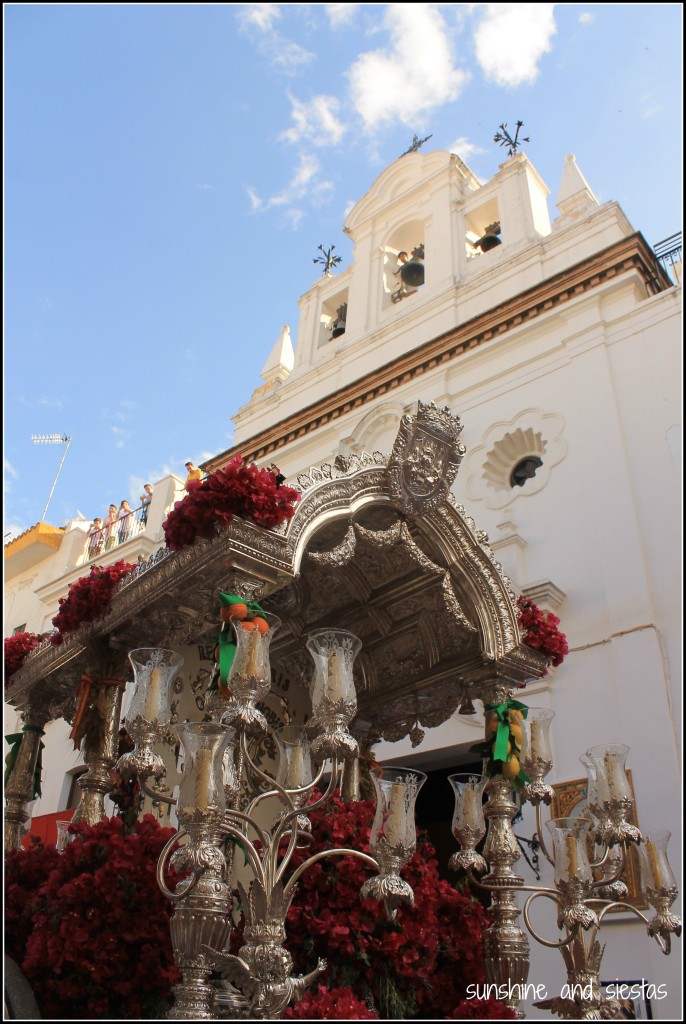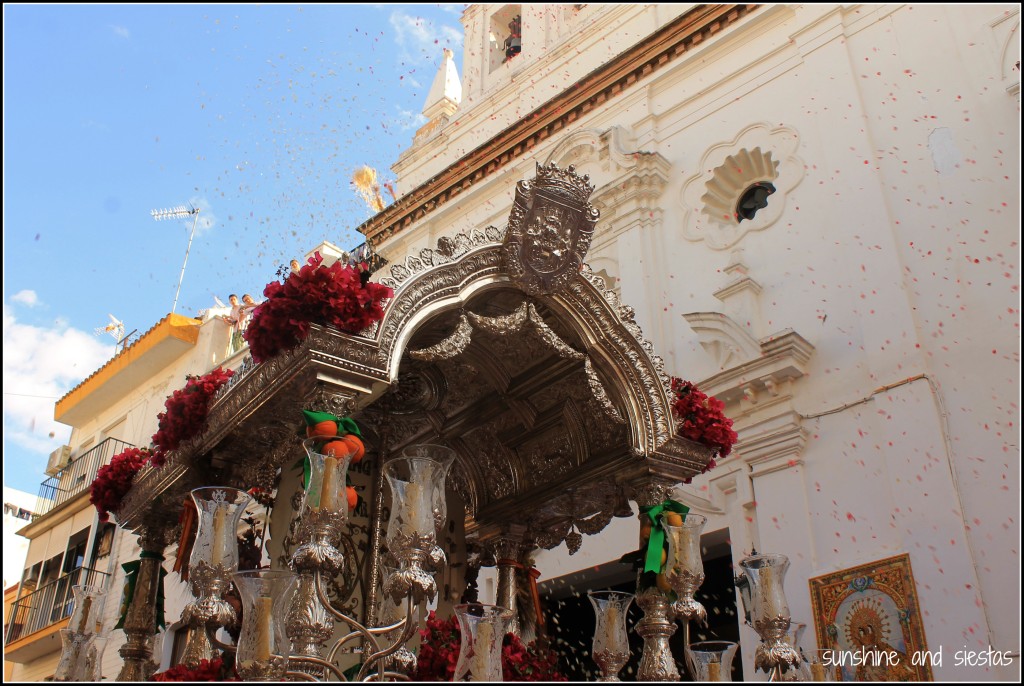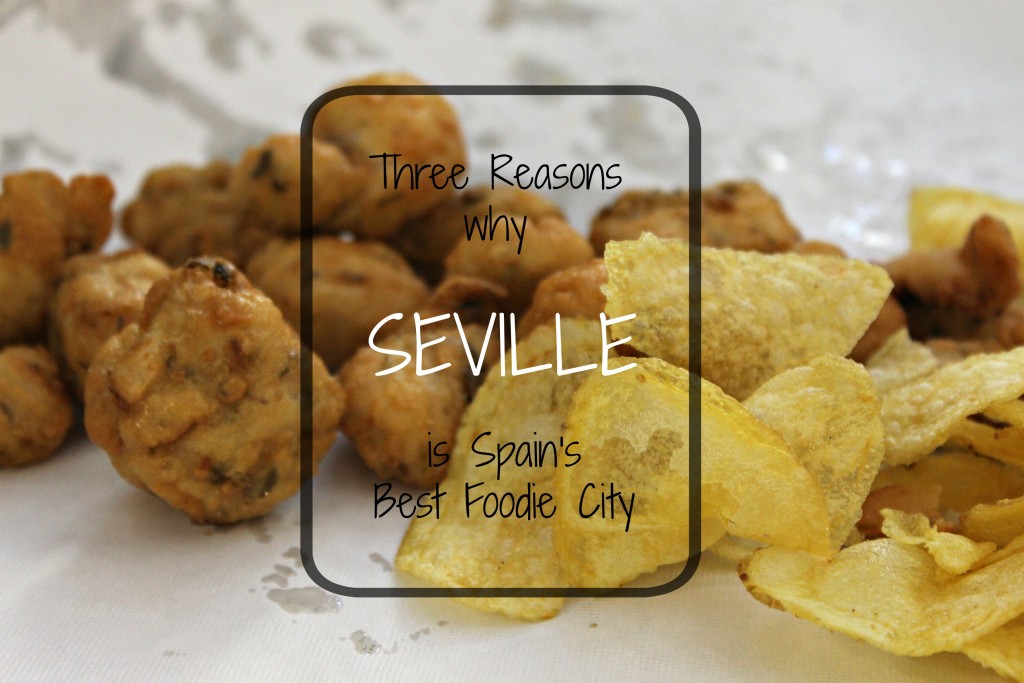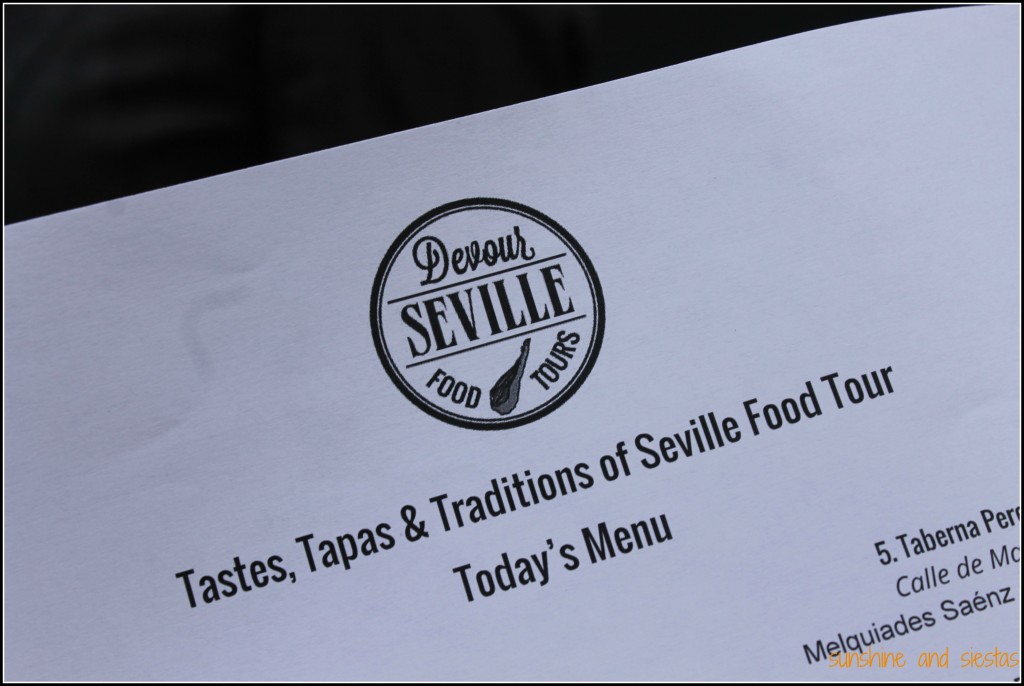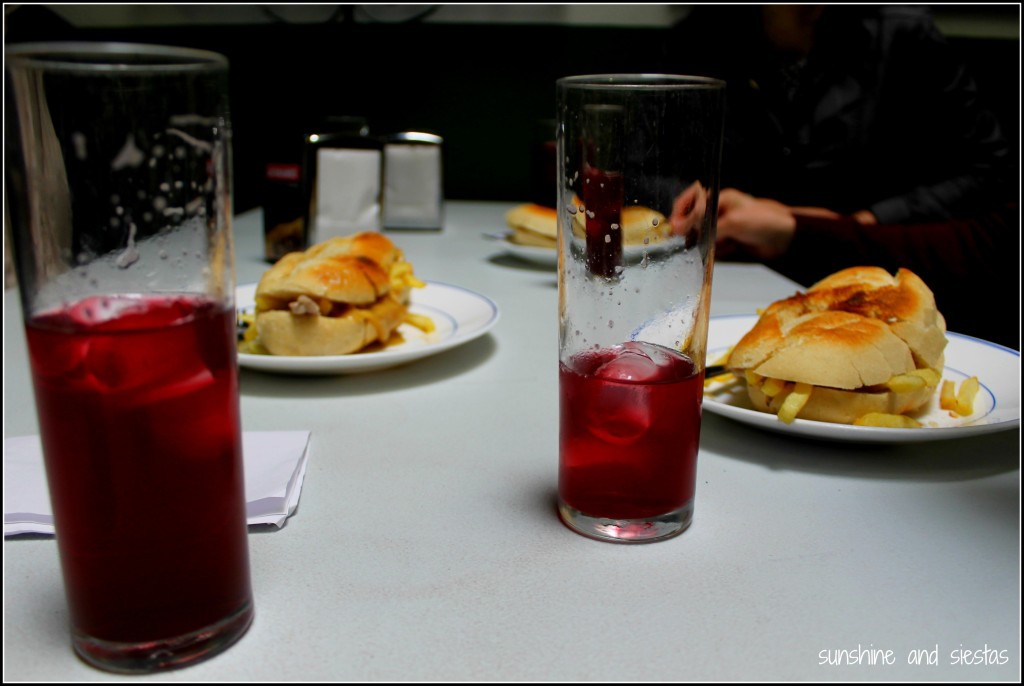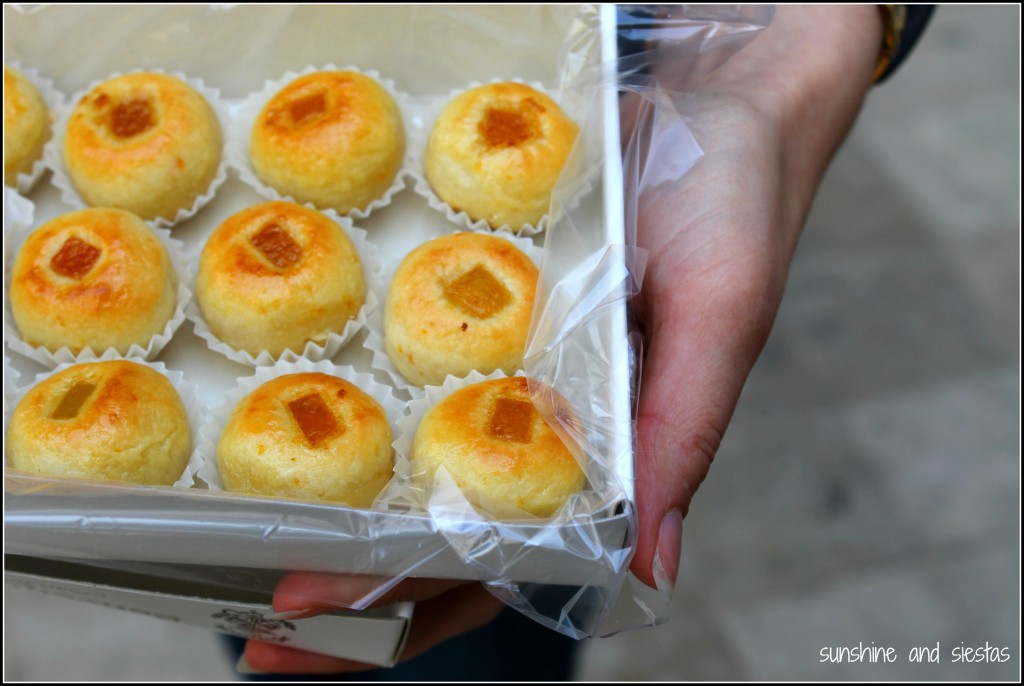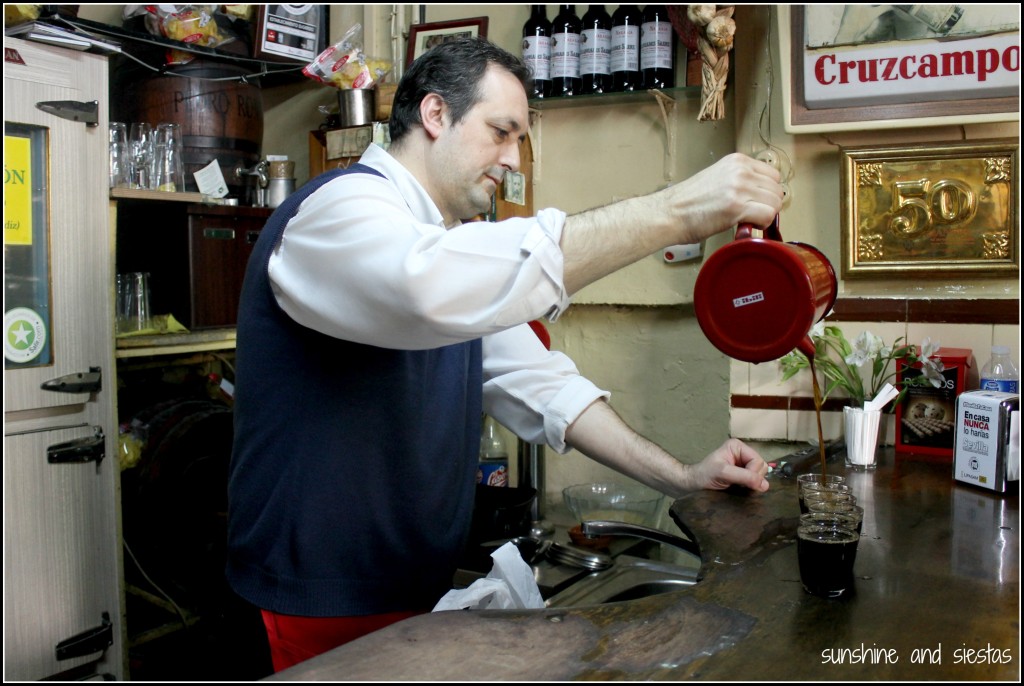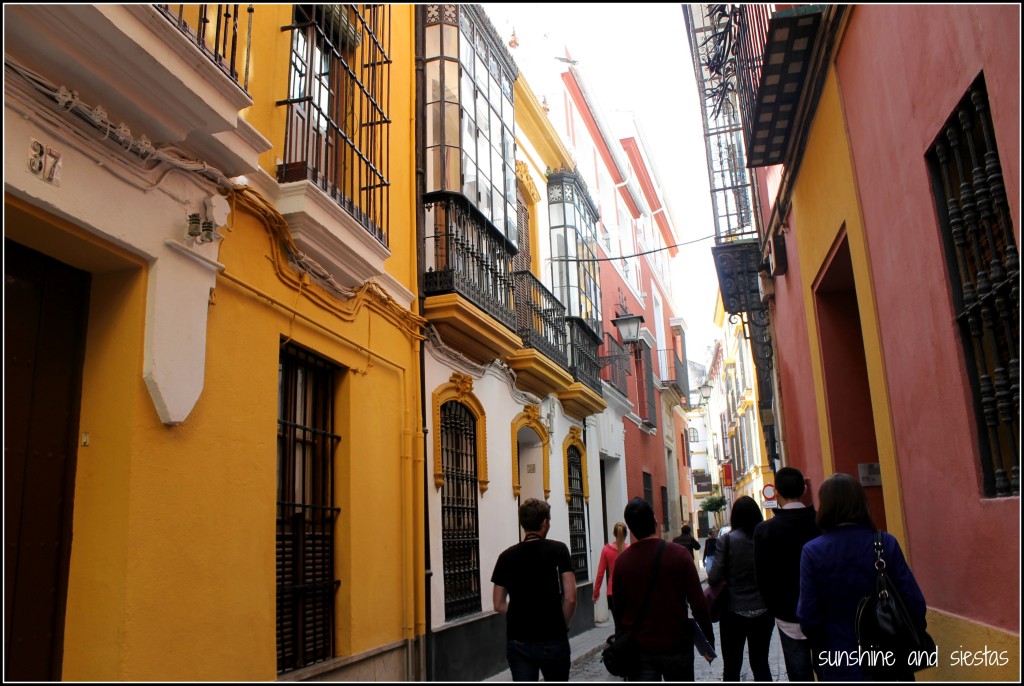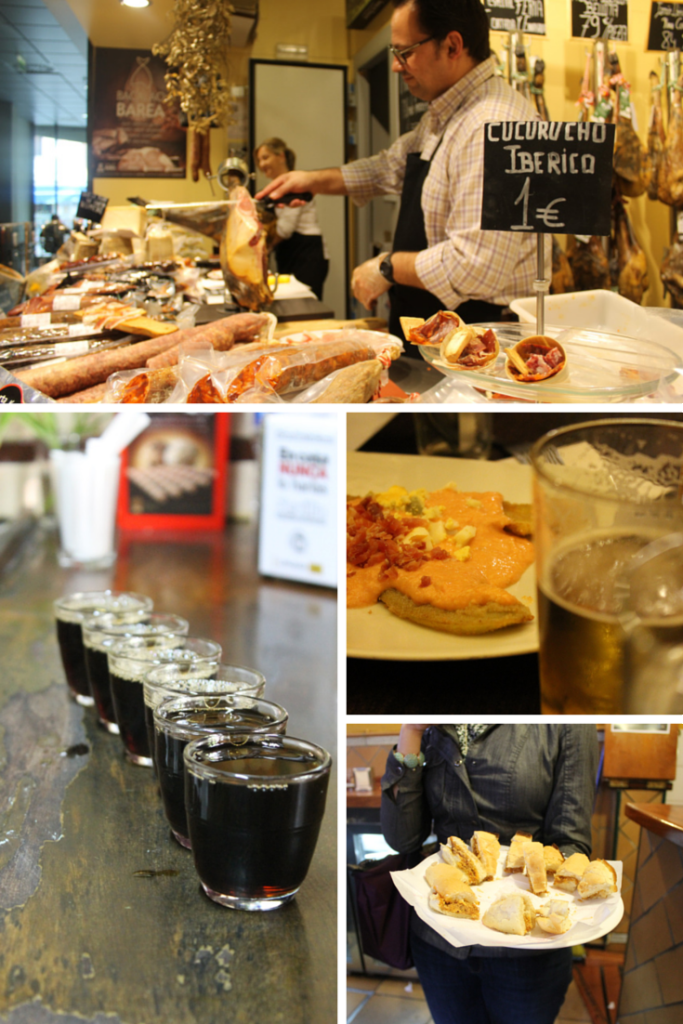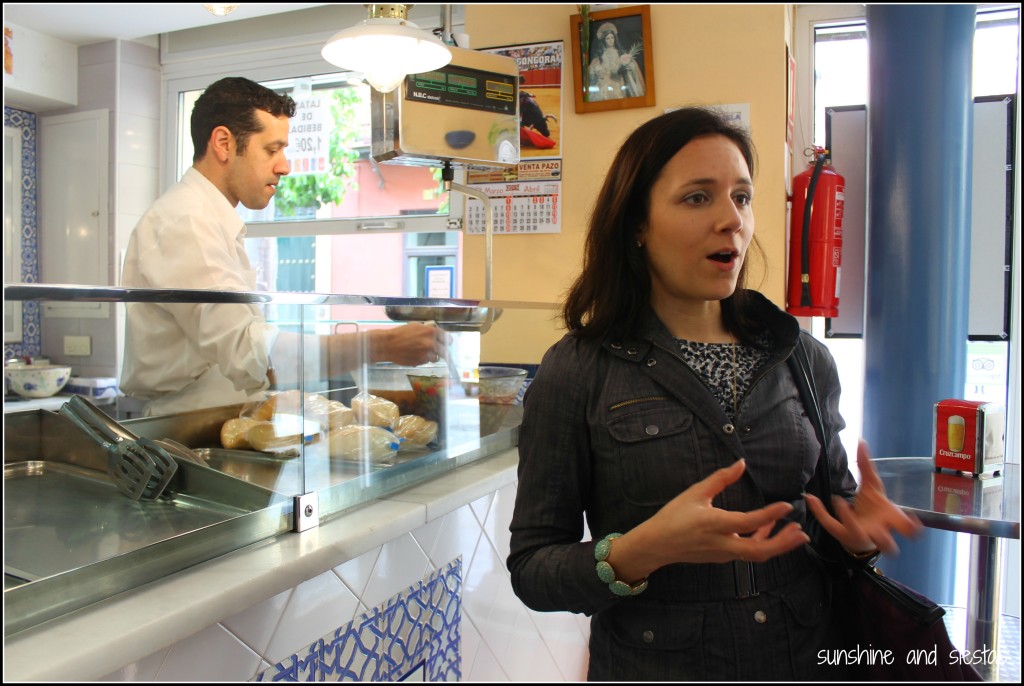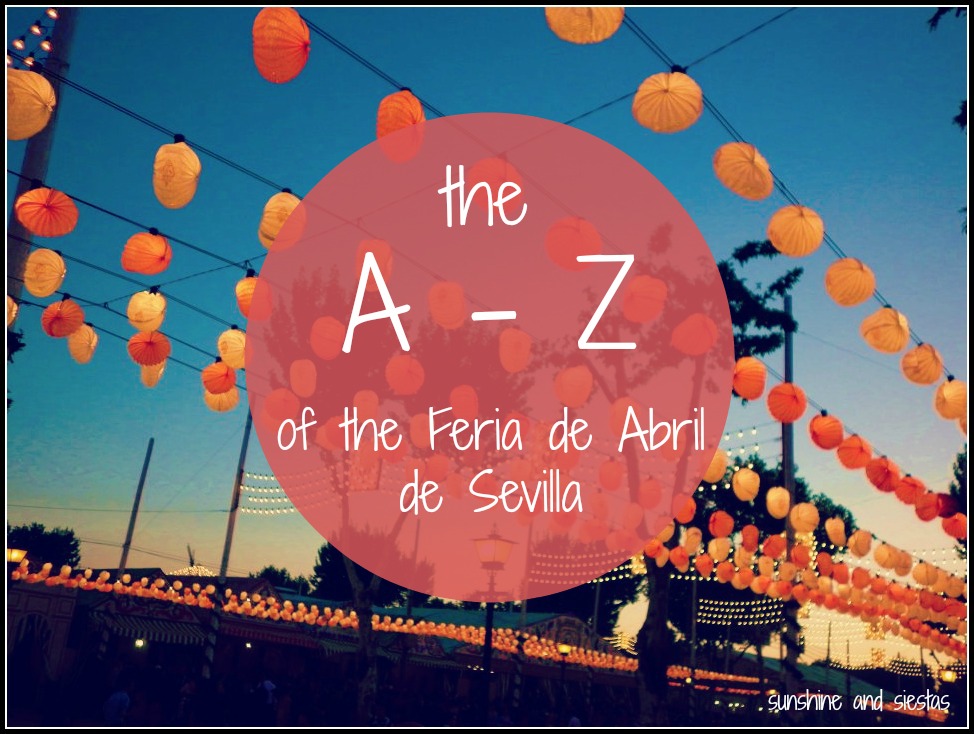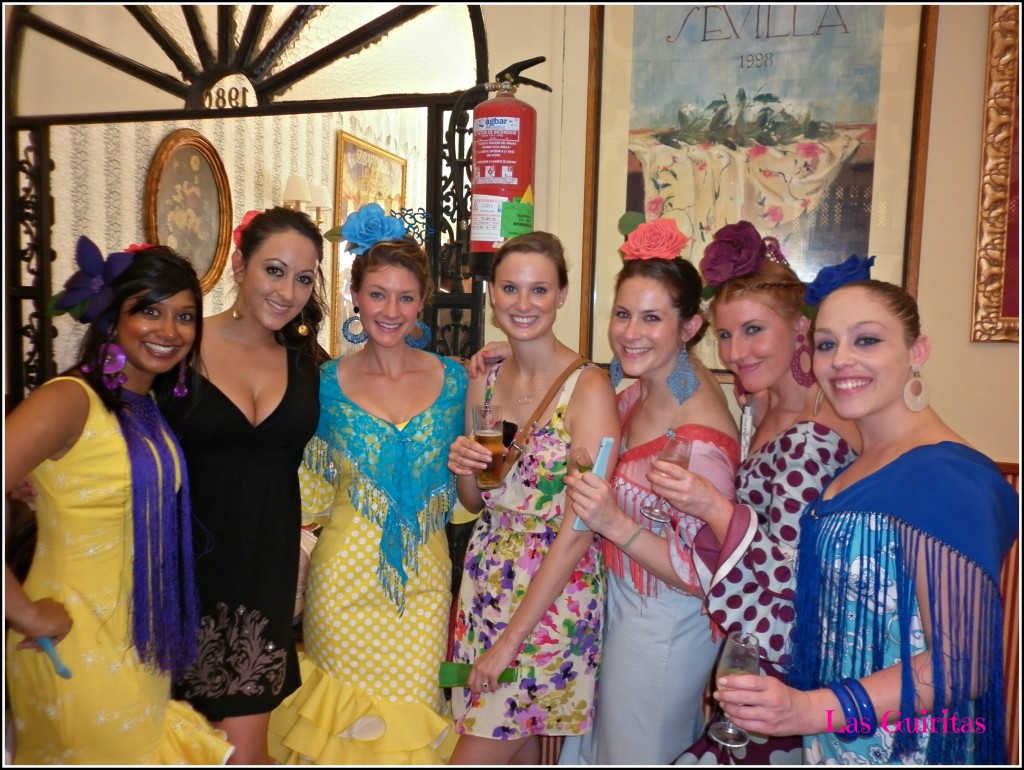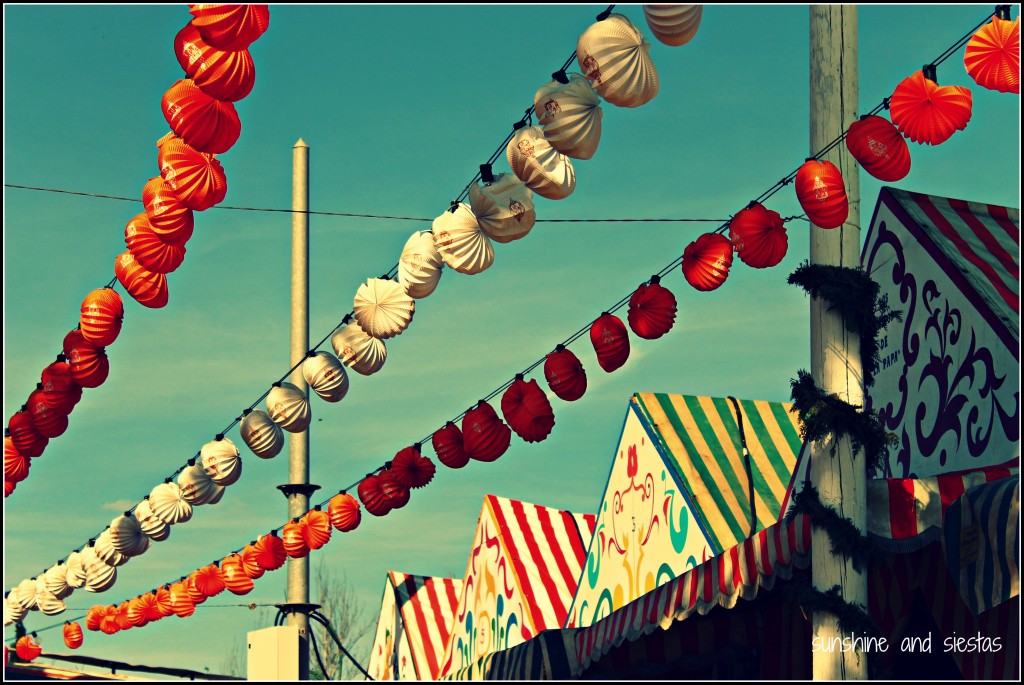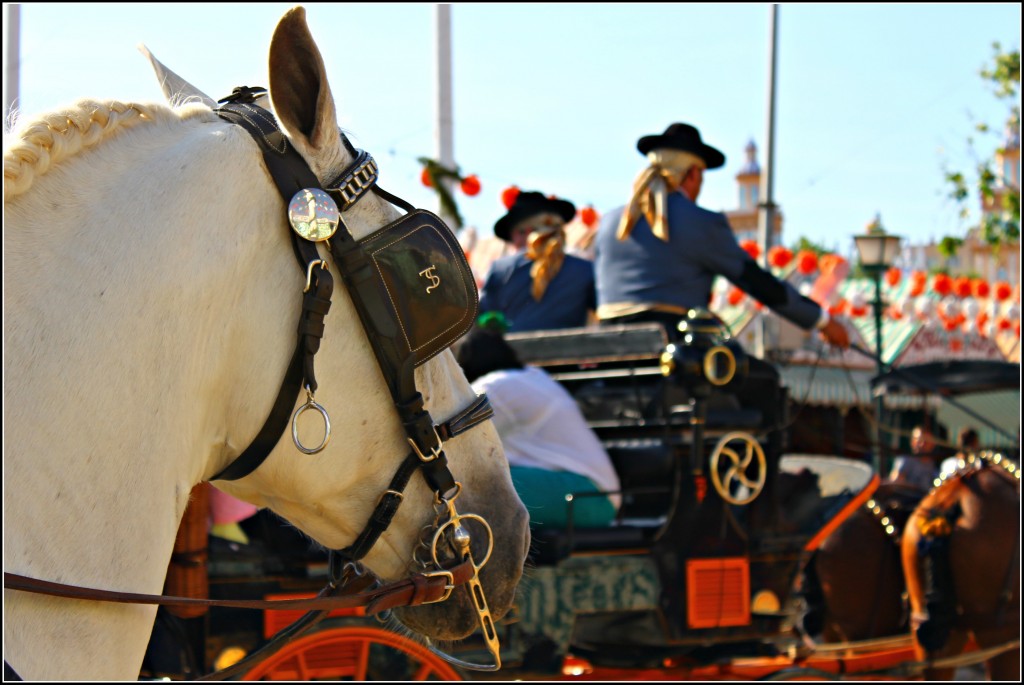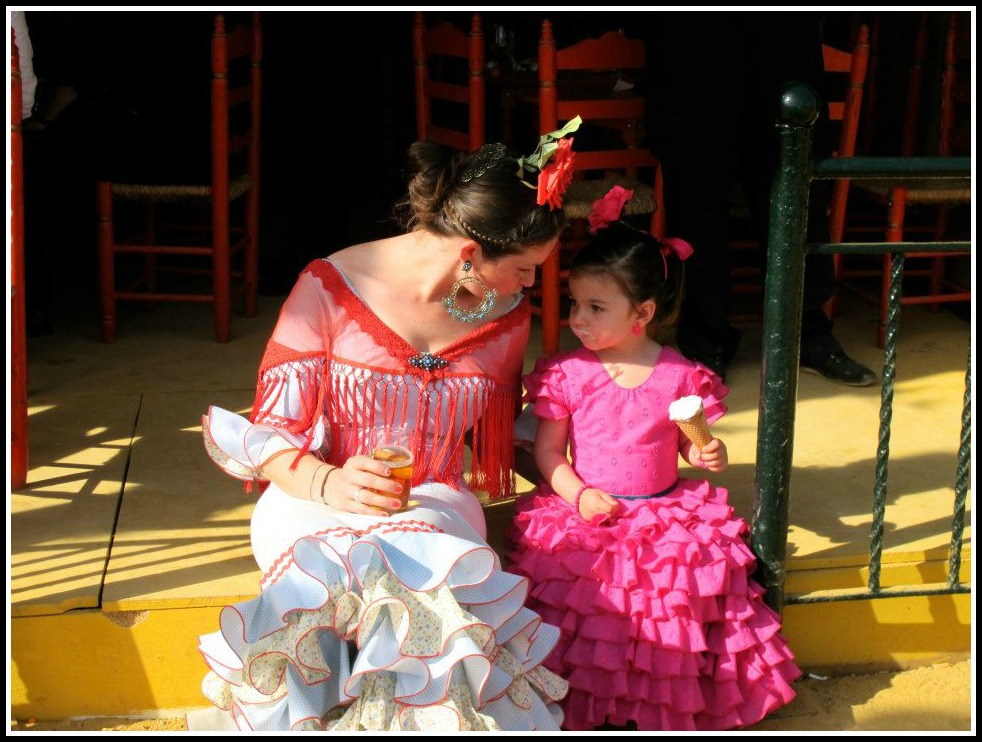I’ve lived (in Triana and Cerro. a World Cup. the Tomatina). I’ve loved (teaching. long nights. tostadas. the Novio). And I’ve learned (how to fake your way to anyhing by playing the guiri card, mostly).
And after eight years as a sevillamericana – September 13th is my eighth Spaniversary! – I think I can call myself a Seville expert. In a city as rancio as this one, two years as a guiri resident means you know the city like the back of your hand – or at least the back bar of Buddha.
And thus, dear readers, I present my curated collection of the Best of the Best, in an order as random as the streets of Santa Cruz:
Best Place to Watch a Sunset: As the popular song goes, El sol duerme in Triana y nace en Santa Cruz. My favorite place to see the sun go down is on the banks of the Guadalquivir with a clear view to the Triana bridge that links the city center to my neighborhood. There are loads of bars that way, as well.
Best Terrace Bar: As long as we’re talking about bars, rooftop bars got hella trendy right about the time I stopped paying rent by moving in with the Novio. This meant I had disposable income that went straight to having fun on the weekends, and I still love one of the first I went to: The Roof on Calle Trajano. Trendy and reasonably priced (as in, 7€ for a G&T instead of 10€), plus with views to the Setas and the Cathedral.
Best Scoop of Ice Cream: Ice cream shops abound, but my favorite is La Fiorentina on Calle Zaragoza. Who can resist cream of torrijas (a Spanish French Toast) or lemon with mint sorbet?
Best Park: María Luisa is charming and has a bunch of resident pigeons, but Parque del Alamillo is sprawling and includes a zip line and far less flying rats.
Best Local Festival: If you’ve read my blog long enough, you’ll know the cattle fair-turned Andalusian showcase the Feria de Abril is my favorite, but I’ll give the Velá de Santa Ana and Holy Week a nod, too.
Best Tourist Attraction: Ooh, my first tough question, but I’m going to say Plaza de España. It’s free, always open and is a special part of Seville’s history. Built nearly a century ago by famed sevillano architect Aníbal González, the tiles, benches and moats were the focal point of the 1929 Ibero-American Fair.
Best Museum: I love a good museum, and Seville is bursting with them. Seriously – this city is 2000 years old! From Flamenco to Fine Arts, ceramics to horse carriages. Espacio Santa Clara isn’t technically a museum, but hosts exhibitions throughout the year in an old nunnery. Find it near the Alameda in the Macarena neighborhood.
Best Museum You’ve Never Heard Of: I’ve heard of it but haven’t been, and my friend Karen McCann of Enjoy Living Abroad loves it: The Science Museum, or Parque María Luisa’s Casa de la Sciencia, which she lovingly calls the Little Museum of Horrors!
Best Tourist Attraction to Skip and Spend that Money on Beer: I mean, I would say the Cathedral because often skip taking people in, despite it being free for me, but the Giralda is worthy of you 10€ (or for far less, you can scale the Setas in an elevator for a view that includes the famous tower). The Torre del Oro and it seafaring museum are largely disappointing, and the view from the top isn’t any better from it because of large plexiglass barriers.
Or, just grab a liter of beer and sit underneath the Torre del Oro, taking in the sunset (see what I did there?)
Best Cruzcampo Bar: Loaded question. It seems that, in Seville, you’re never more than 100 feet from a bar or an ATM, and the question of who has the best pour is largely debated. I’ll go with my perennial favorite, La Grande in Triana, or nodescript La Melva in Sector Sur, and also give a shout to El Tremendo in Santa Catalina.
Best Plaza for People Watching: Spanish abuelitos stalk Plaza Nueva, just adjacent to Avenida de la Constitución and town hall. You can also watch street performers, witness weddings and join in protests.
Best Plaza for Beer Drinking: While I think there is nothing greater than drinking a beer outside on a sunny day, I often take guests to Plaza del Salvador to stand beneath a salmon pink church that’s centrally located.
Best Chocolate con Churros: Churros on a Sunday morning are one of my treasured traditions, and none are as good as the ones at Bar La Rueca in Plaza del Juncal. It’s a trek unless you’re in Nervión.
Best Barrio: Crowing a neighborhood as queen of them all is difficult because of taste. I’m partial to a few for their cultural and gastronomical offering, and am a big fan of mi querida Triana. I also like bullfighting neighborhood El Arenal, hip Feria with its weekly flea market, El Jueves, and even Alameda is growing on me.
Best Day Trip: Sadly, Seville doesn’t have too many quaint towns or natural highlights. While I’d spring to go to San Nicolás del Puerto at any free chance and hike the Vía Verde, I usually send other visitors to Córdoba. A 45-minute train ride straight to a quainter version of Seville and home to as Spanish of a corn dog as you can get, the flamenquín.
Best Montaíto de Pringá: This mincemeat sandwich is one of Seville’s culinary claims to fame, and most traditional tapas bars will have it on the menu. For me, Bodega Santa Cruz‘s is top notch and a perfect, hot snack if I’m in the Santa Cruz neighborhood.
Best Breakfast: I wasn’t a huge fan of breakfast until I moved to Southern Spain and got coffee, freshly squeezed orange juice and bread with crushed tomato and olive oil for 2.50€. It ruined me. If I am craving something traditional, I love La Esquina del Arfe in the El Arenal district, but I’ll splurge with girlfriends at La Cacherrería on trendy Calle Regina every once in a while, too.
Best Bike Shop: Seville’s is one of Spain’s best cities for biking (and within in the top 10 in Europe), and my beloved bike Feliciano gets his tune ups at Quique Cicle in El Juncal. A close second is my neighborhood shop, Ciclo Triana.
Best Haircut: Loli is more than just the lady who trims my split ends – she is my therapist, my language teacher and my biggest fan. Find her and her brother Manolo at Top Image in Puerta de Carmona.
Best Teeth Cleaning: Dental care in Spain is way different than in the US, and while no one can top my Spain fanatic Dr. Clinton back home, my best experience has been with Dra. Ardila in El Centro (coincidentally, she’s just a few blocks from la Fiorentina…!)
Best Flamenco Show: Admittedly, I’m not a huge follower of flamenco, but everyone I have sent to Casa de la Memoria, housed in an old palace on Calle Cuna, has not left disappointed.
Best Tapas Bar: I’m often asked about where to dine in Seville, and while this is an entirely personal question, I always suggest La Azotea. Inventive takes on traditional and local fare, plus an unbeatable wine list and terrific service. I usually head to the one in Santa Cruz. Another favorite is Bodeguita A. Romero, which has loads of different types of dishes for any taste.
Best Dive Bar: Can I say I’m a closet metal head? It’s been a while since I’ve been to Matacas (think heavy metal juke box, SciFi movies and the only legit Jägerbomb I’ve had in Seville), but this Puerta Osario bar is one of the most underrated in town.
Best Bar Manolo: Call it what you want – Bar Manolo, Bar de Viejos or Old Man Bar, but these establishments are seriously the salt of the Spanish earth. You get beer, house wine, vermouth and a shot of anís on the menu, but what they lack in choice they make up for in character.
In my neighborhood I hit La Estrellita and El Paleta Viejo; in Santa Cruz, Bodega Santa Cruz or El Goleta for orange-infused wine, Bodega San Jose in El Arenal (it smells like cat piss, I know) or Bodega La Aurora in Alfalfa. Really, if there’s a Spanish abuelo outside, I’ll go in.
Best Street: My opinion on this has changed yearly, and many streets have a lot of charm. I’ll go with Calle San Eloy in the smack dab center for its shops and gorgeous balconies.
Best Spot for a Selfie: Calle Placentines where it crosses Argote de Molina. You can get the entire Giralda in for free (though if you’re willing to pay, take the Cathedral Rooftop Tour).
Best Splurge: Seville can be done on the dirt cheap (hostels, bocadillos and beer buckets at La Sureña) or you can make it lavish. While it could be tempting to stay and play at Seville’s only f-Star hotel, Alfonso XII, I’d vote for the hammam and massage at Aire de Sevilla, tucked away in Santa Cruz.
Best Food to Try, Just Because: Caracoles, or snails. Look for them in the springtime. I prefer them to, say, coagulated blood in onions.
Best Tour: Seville is a dream for travelers: budget-friendly, accessible and full of things to do. I’ve been invited on loads of cool tours but think my favorite would be Devour Spain‘s part-history, part-gastronomy tour.
Best Semana Santa Bar: I always take my visitors to a church to explain Seville’s reverance to Holy Week, and follow up with a beer at a Semana Santa bar, covered with relics and photos of this important celebration. I either do the Esperanza de Triana—Bar Santa Ana route, or skip the church and head right to La Fresquita in Santa Cruz, where the barkeep is a member of the Macarena and has a botafumeiro going every so often.
Best Menú del Día: three parts food and a million parts a wallet-saver, the menú del día is a fixed-price menu with two entrees, dessert, drink and bread for cheap. The choices at Bar Bocaíto in Nervión are plentiful and always changing, and you pay just 7.50€. No wonder the place is always packed!
Best Local Market: I’m partial to two – Calle Feria‘s is set in a crumbling building next to a church with a bar on two of the four corners. In one of those bars, you can actually buy something from a fish stall and have it served up! The other is my local market, el Mercado de San Gonzalo. It’s gritty and cheap and was one of the area’s first permanent buildings.
Best Disco: I am not the person to be asking about this (look for me instead at the Bar Manolos), but I like Alfonso in Parque María Luisa during the summer months and Tokio during other times of the year for its proximity to the center.
Best Place to Catch Something Cultural: The Patio de la Diputación almost always has something on during the weekends and summer. Think movies, talks and free food samples.
Best Souvenir: If your carry-on can handle it, the hand painted ceramics on sale in Triana‘s multiple shops are my favorite things to buy for friends. Check Calle San Jorge and stop by the newly inaugurated Ceramics Museum if you can.
Best Month for Sevillanos: April. Orange trees are in blossom, the weather is perfect, Cruzcampo seems to taste better and, if we’re really lucky, both Semana Santa and Feria fall in April.
Best Month to Visit: I usually push for October, March and April because of the weather and cheaper prices. But seriously, Seville has a lot to offer whenever you come – even in the stifling summer months!
Seville seems to have one foot firmly in the past and another stepping towards the future. It’s constantly changing within its parameters but hold true to its values and customs. In eight years, I’ve explored every inch of the city center and a number of barrios, become a fierce supporter of a local team, learned the lingo and have come to feel like one of them.
Challenge me on anything, and you’ll give me something to do at the weekend! Or, if you liked this post and want to take it with you, why not download the GPSMyCity app and purchase the GPS-enabled guide? Your dollars help run this site!
